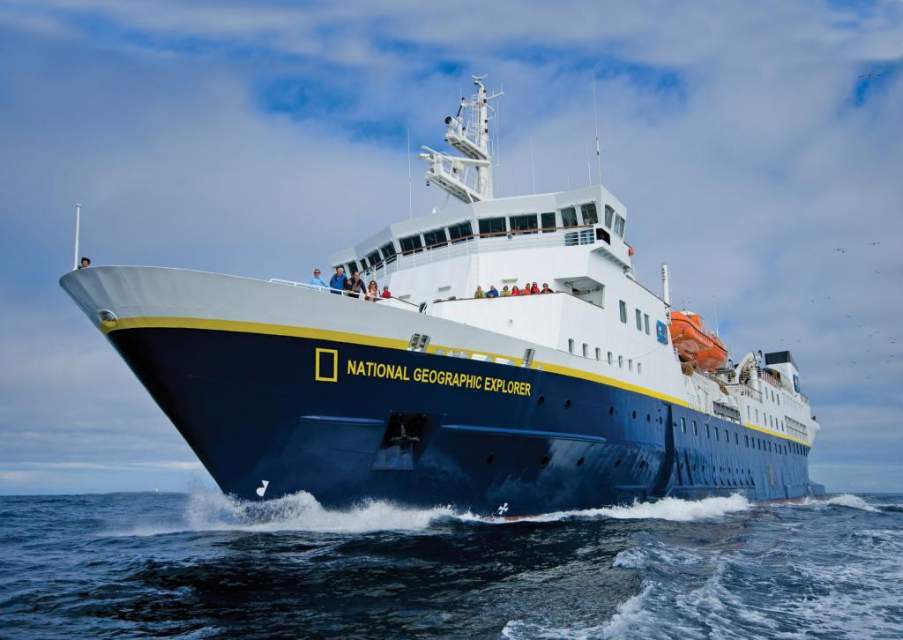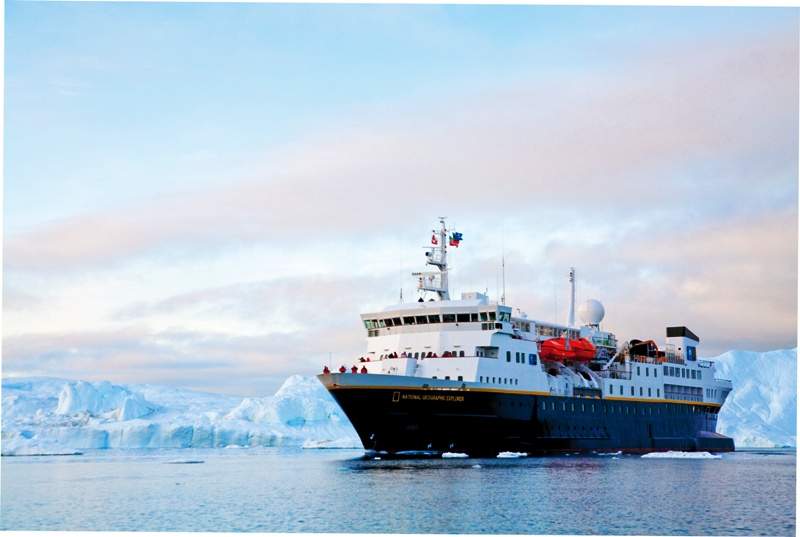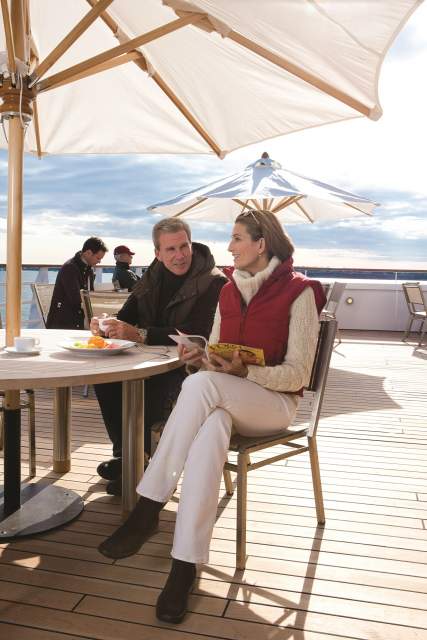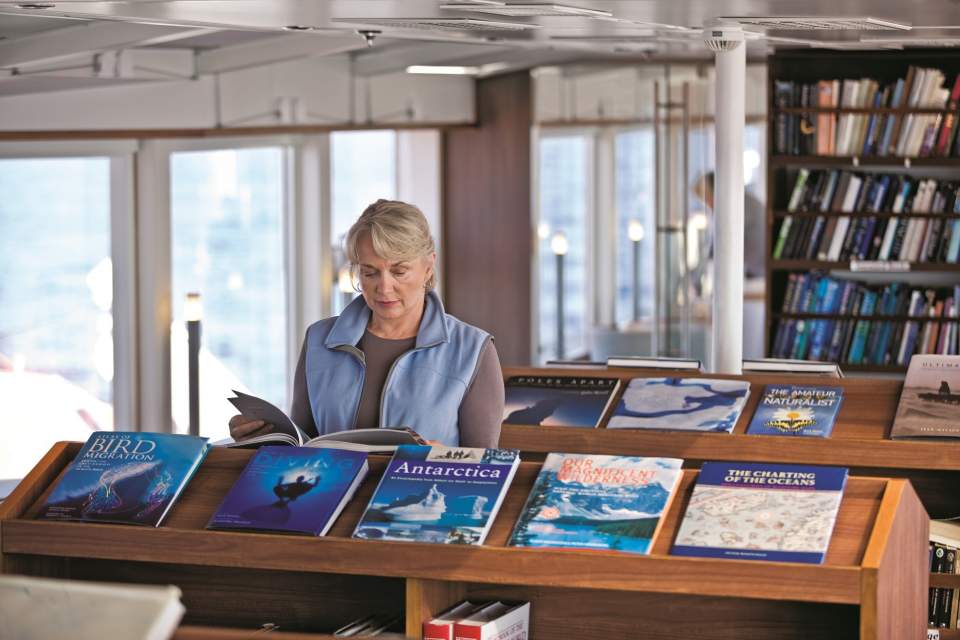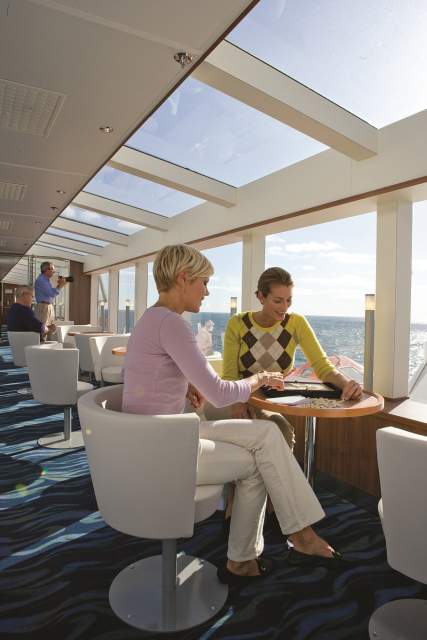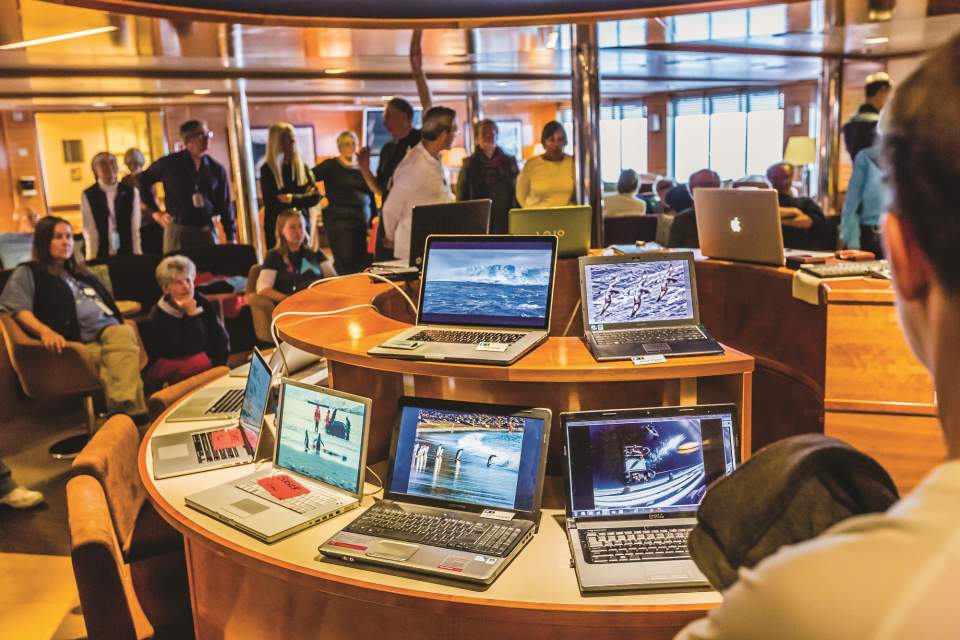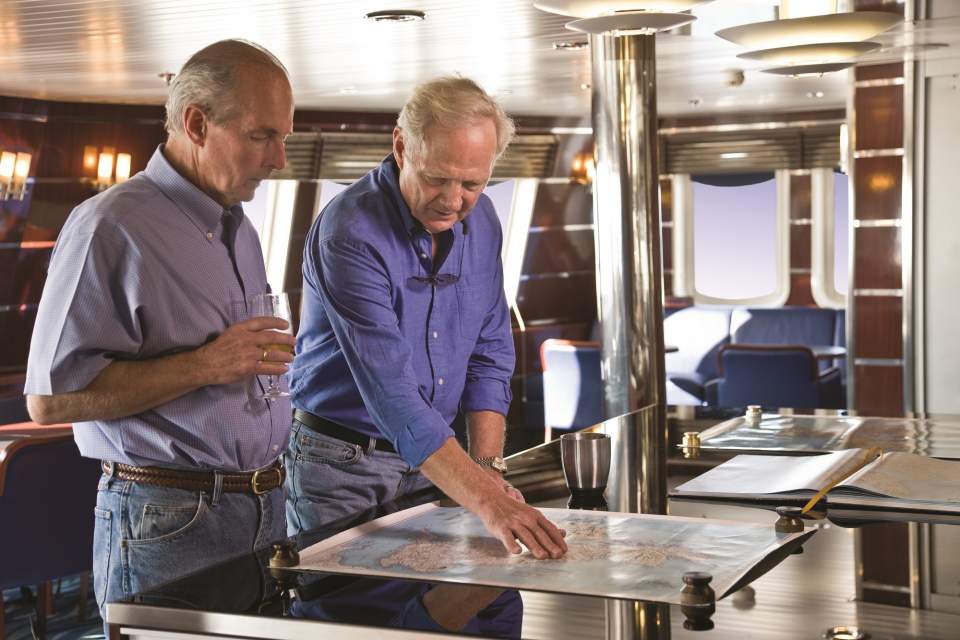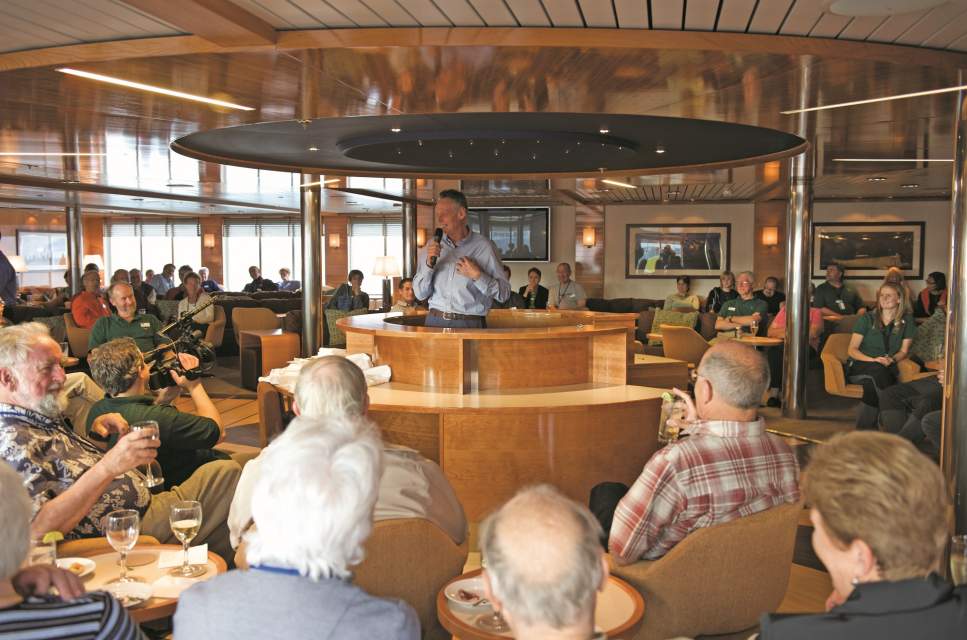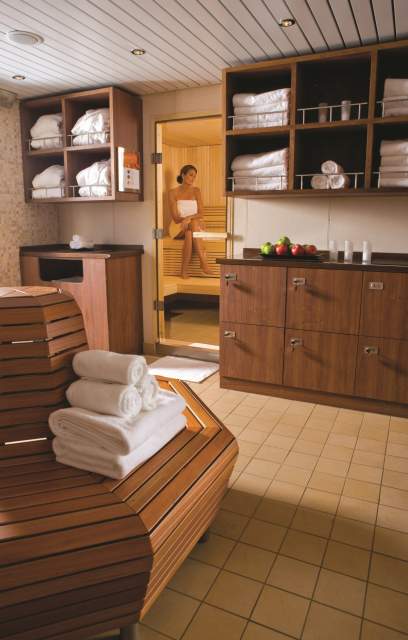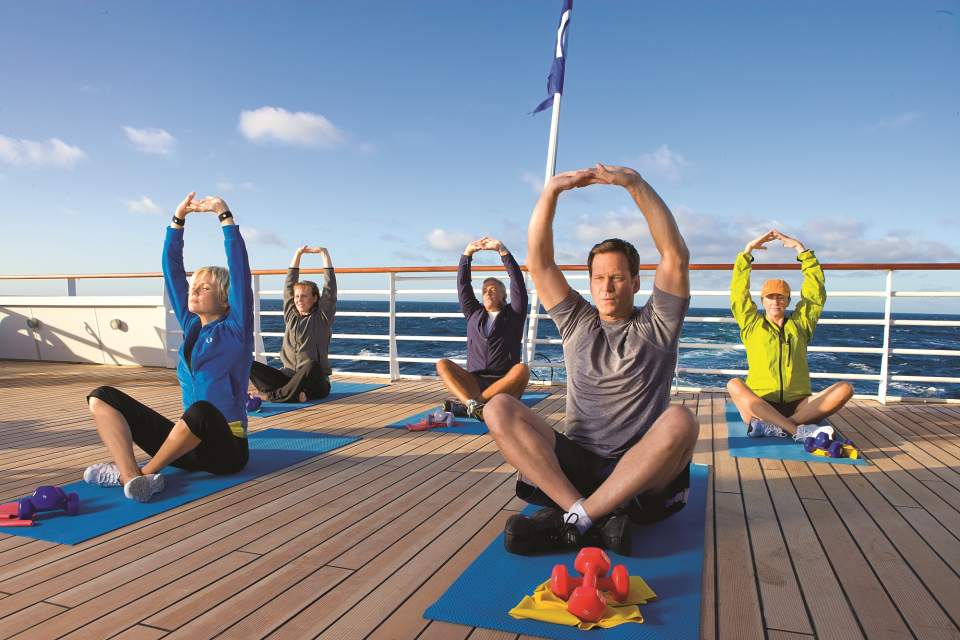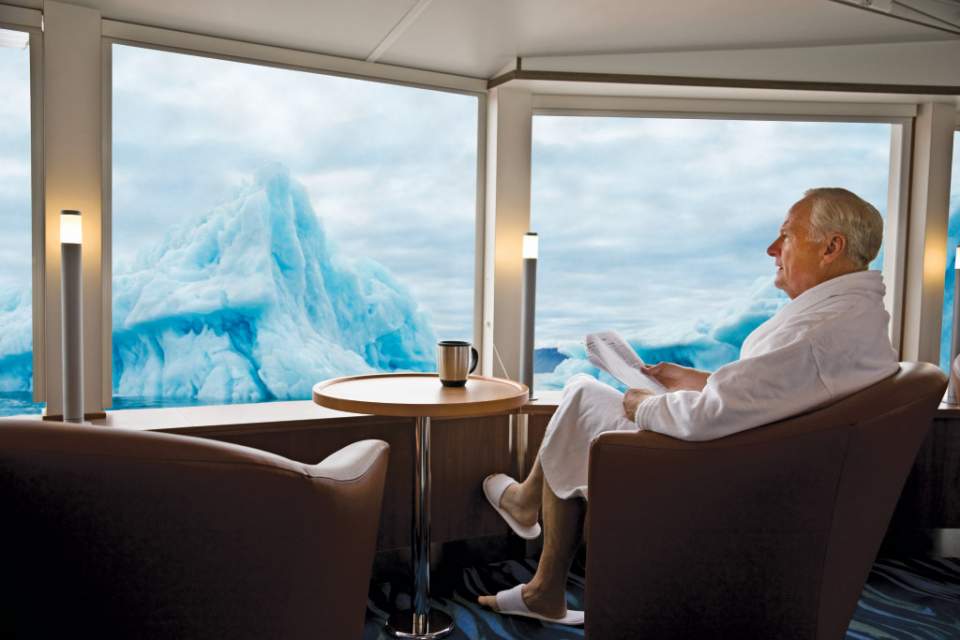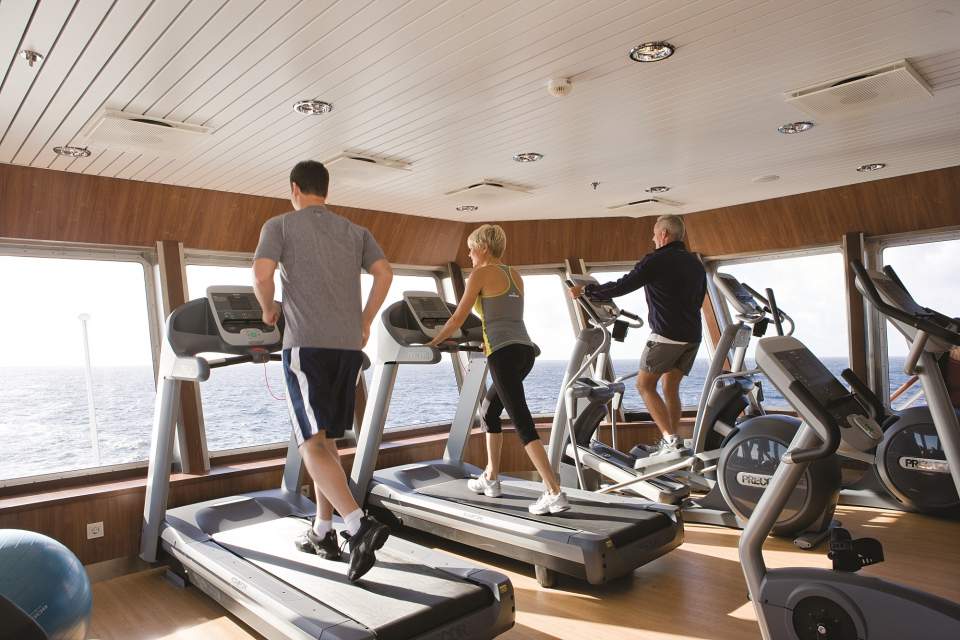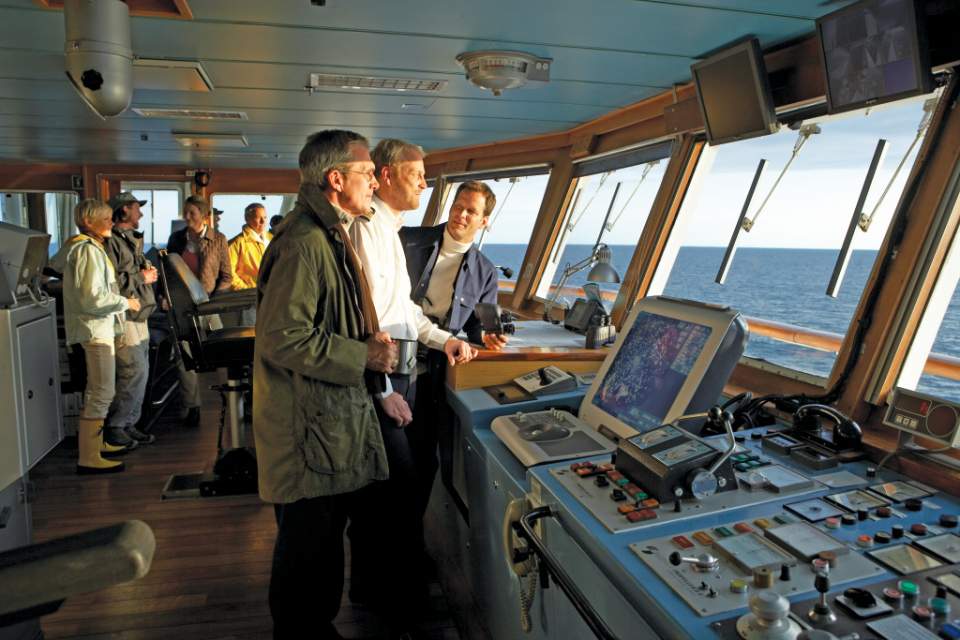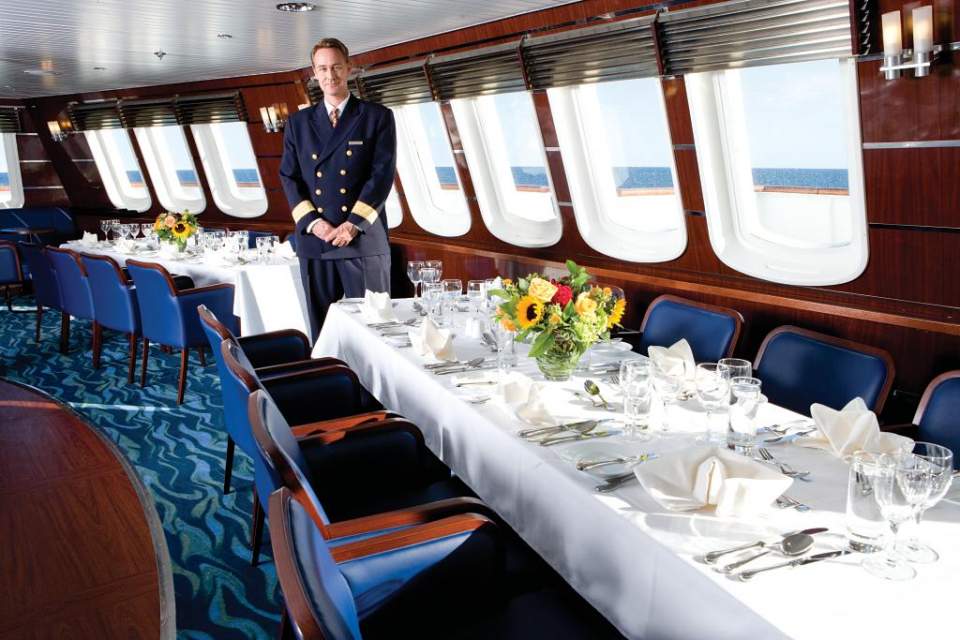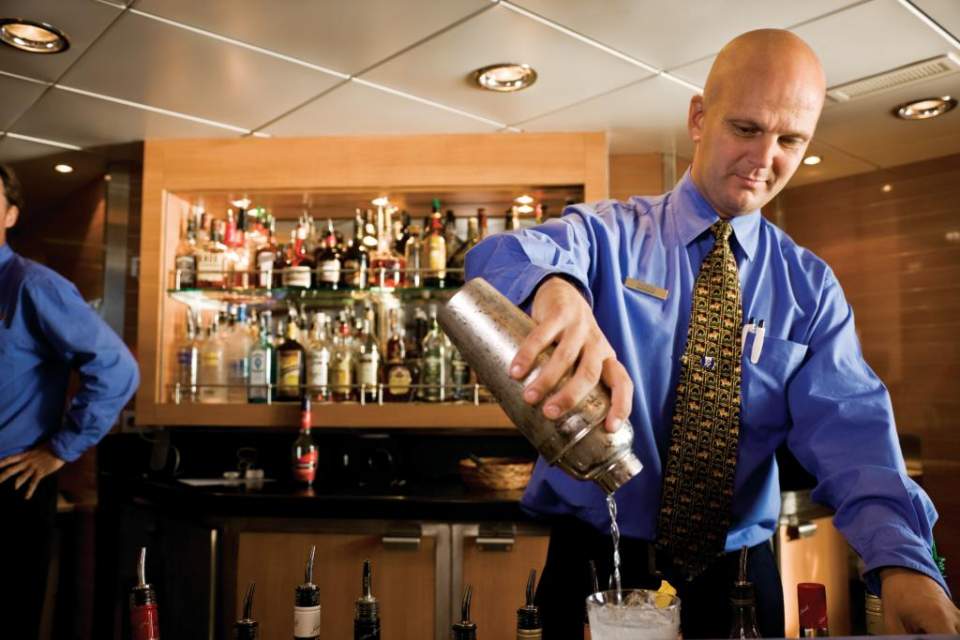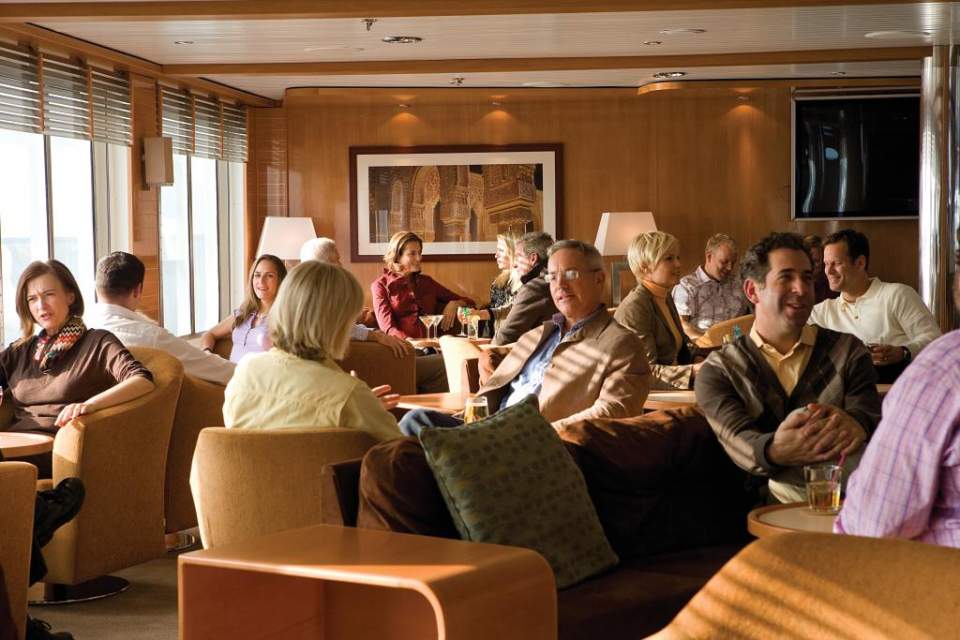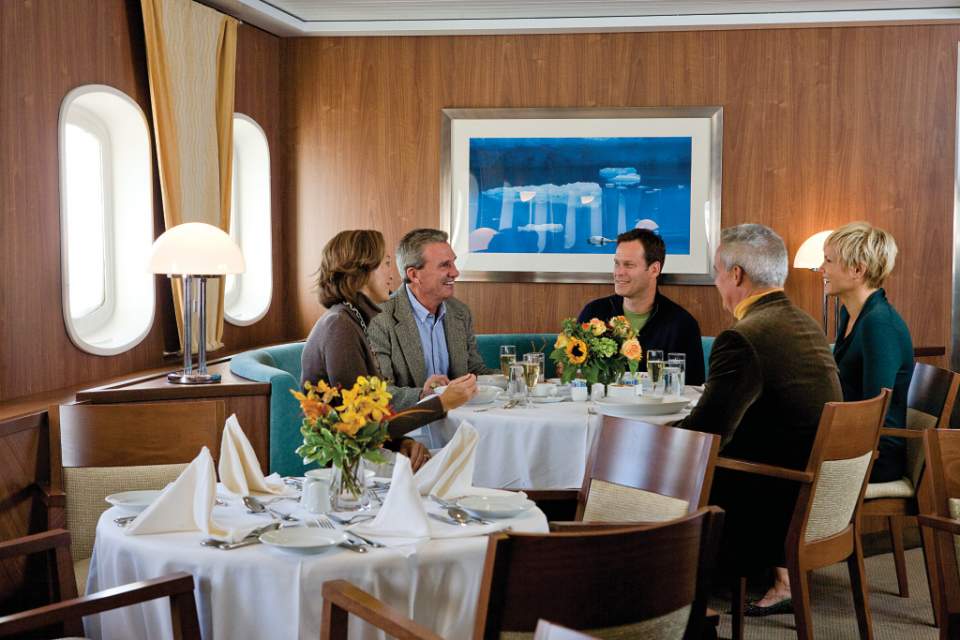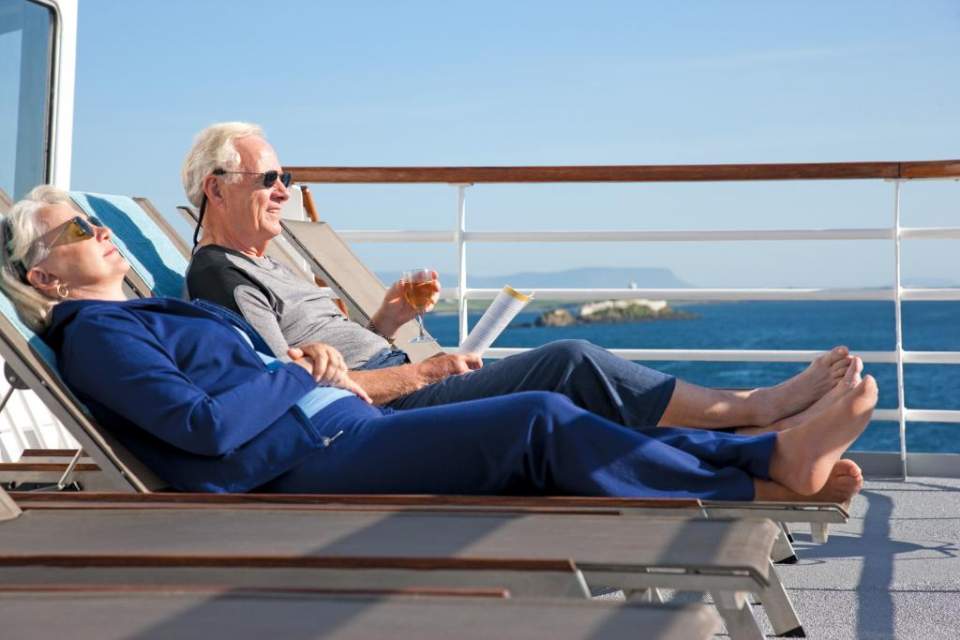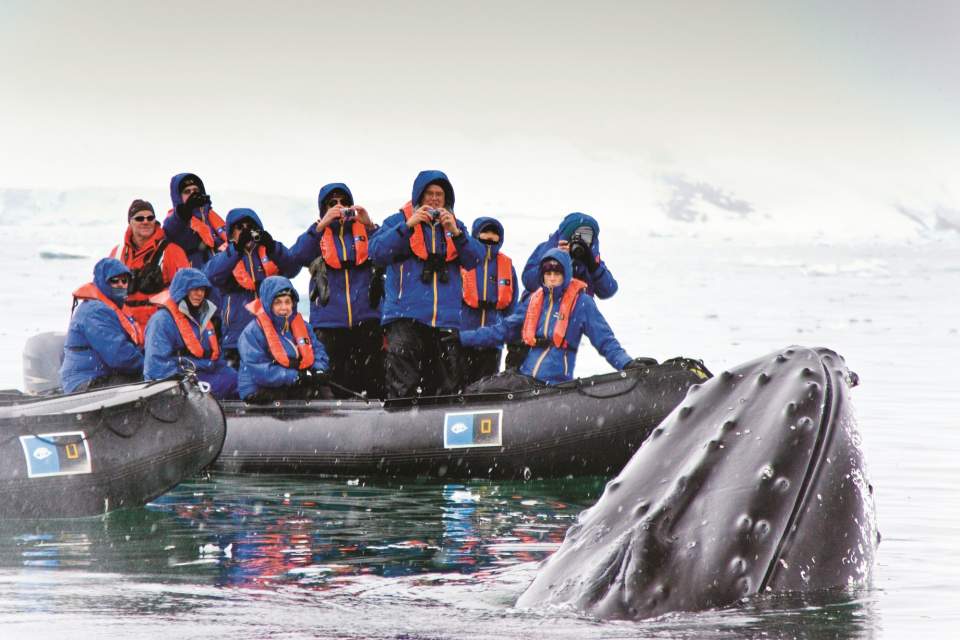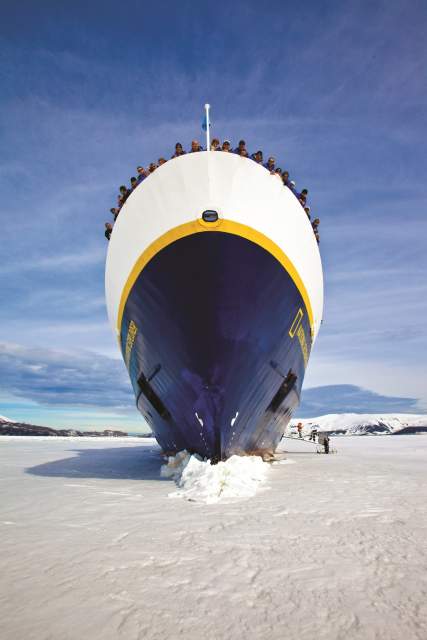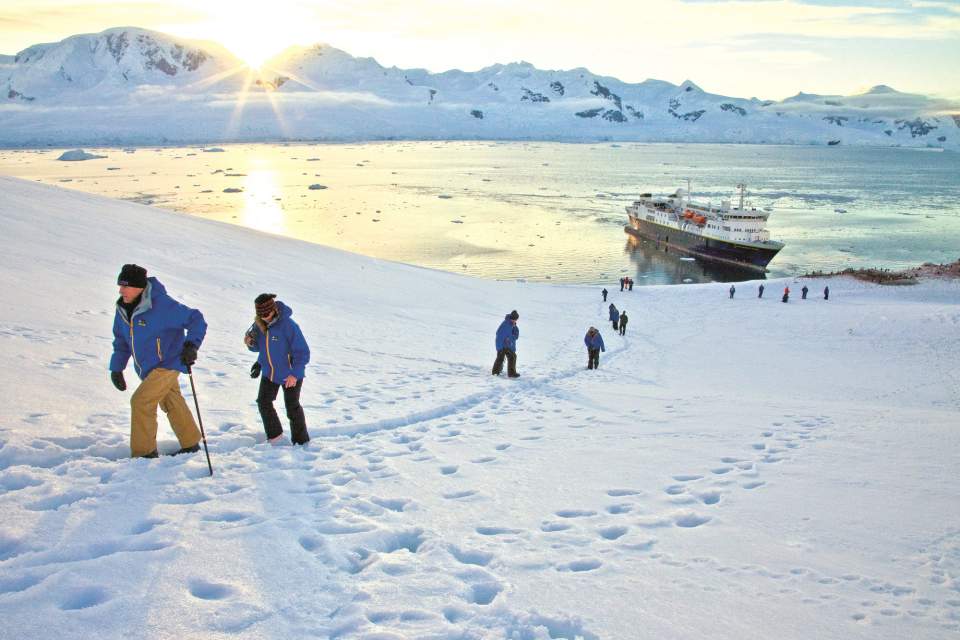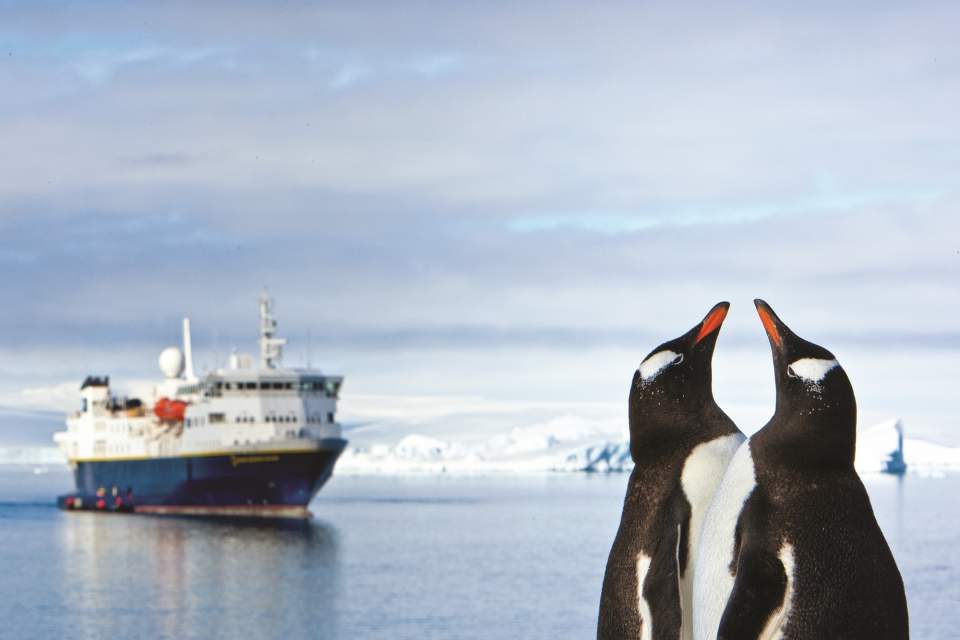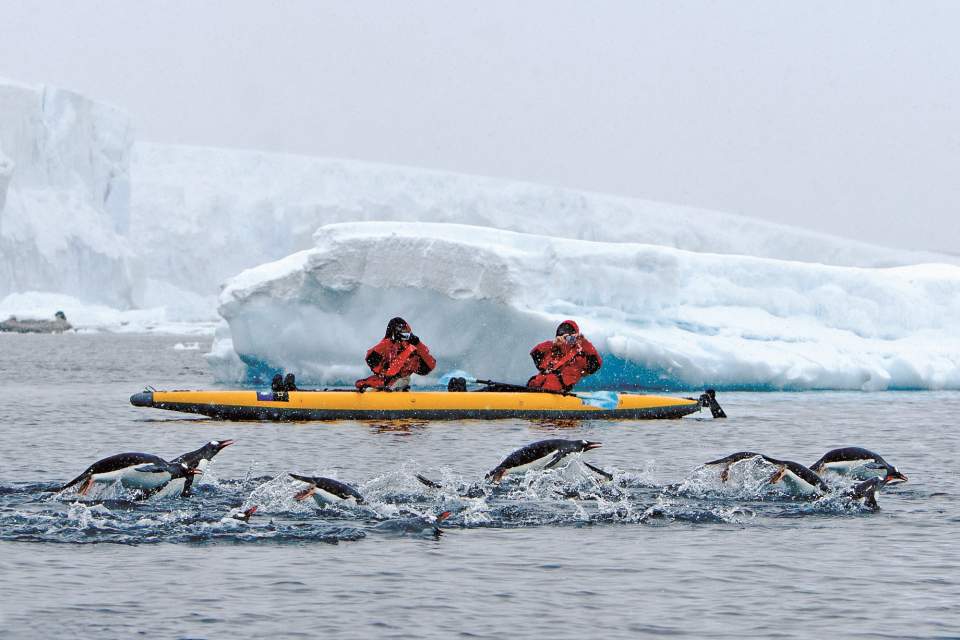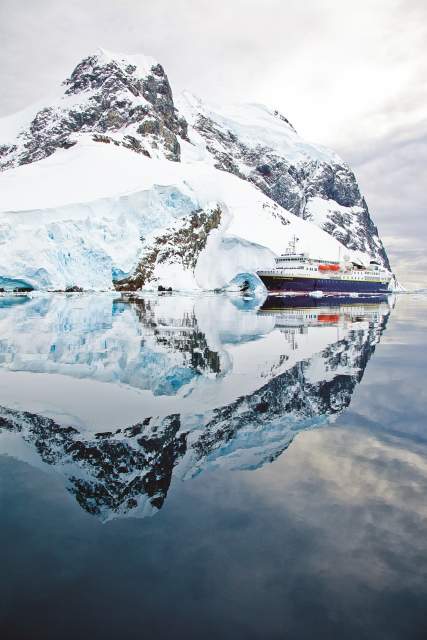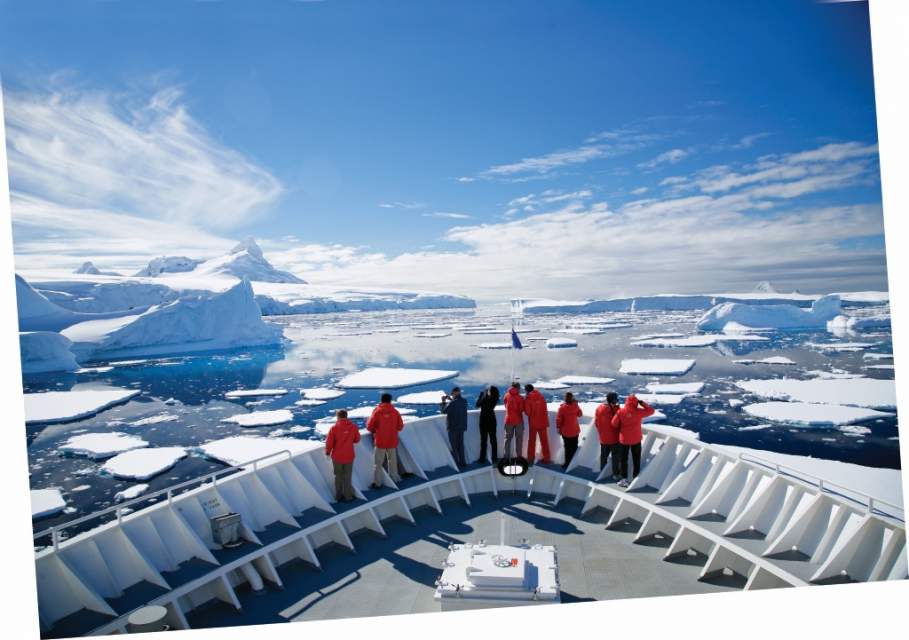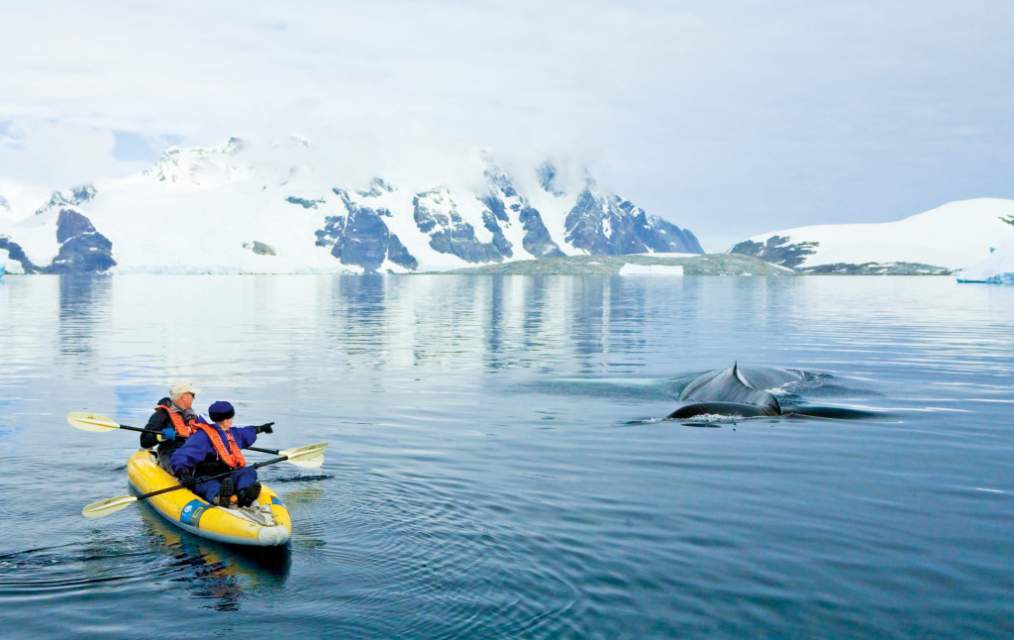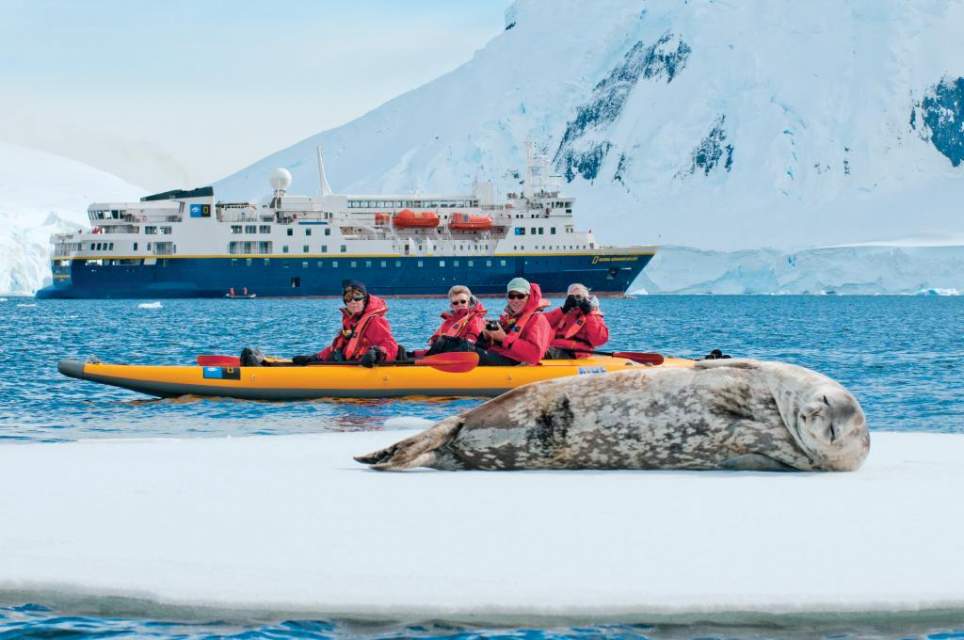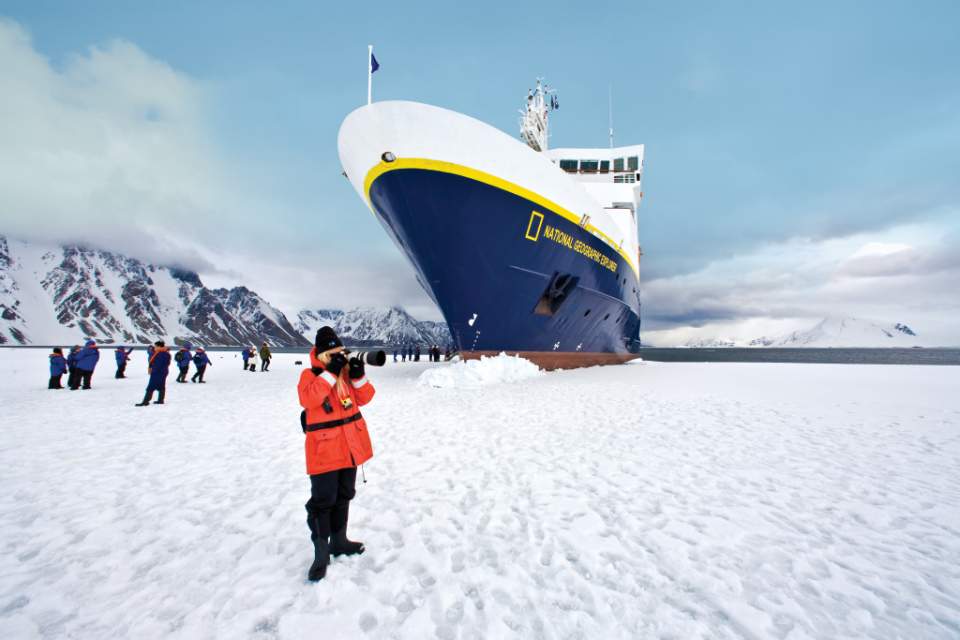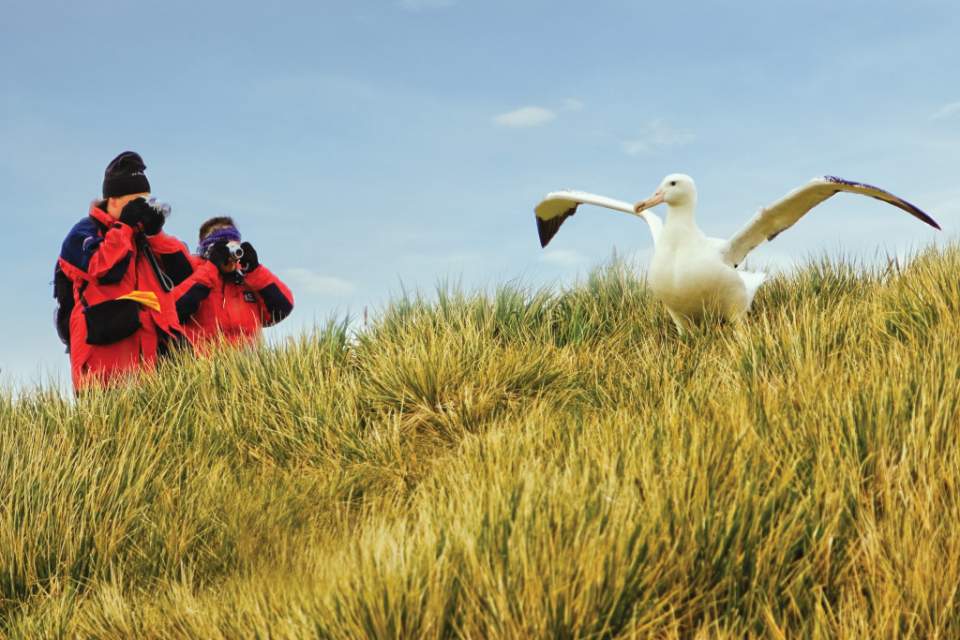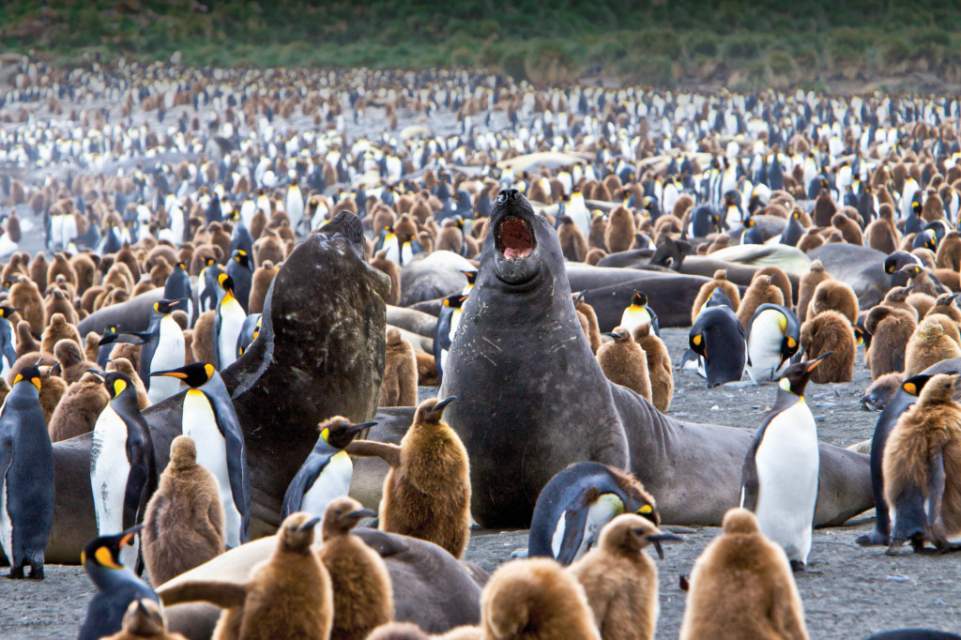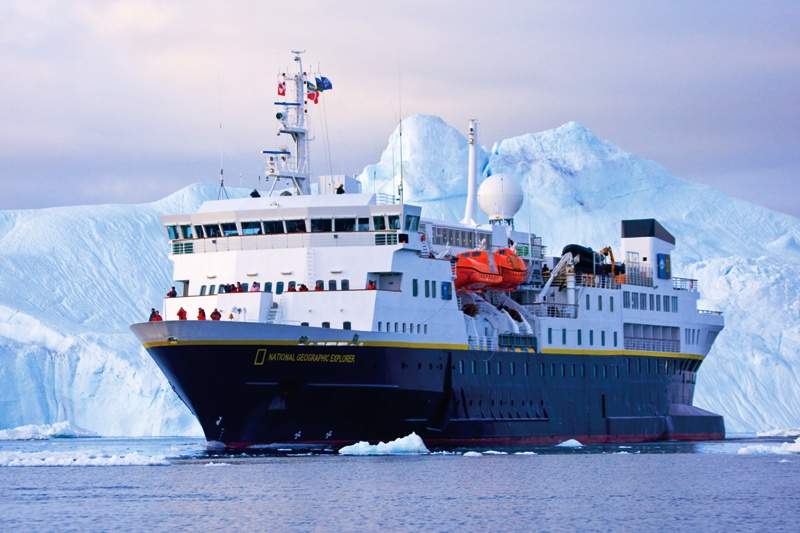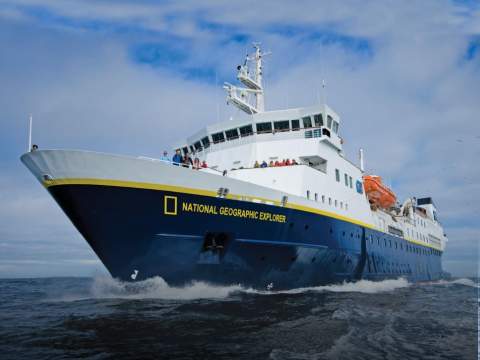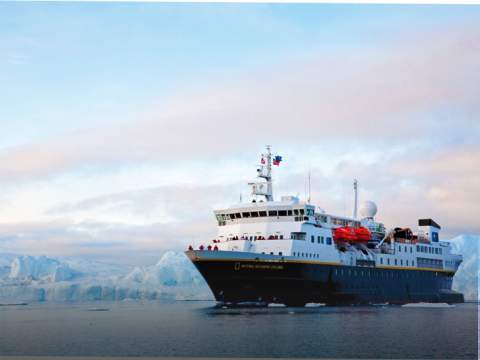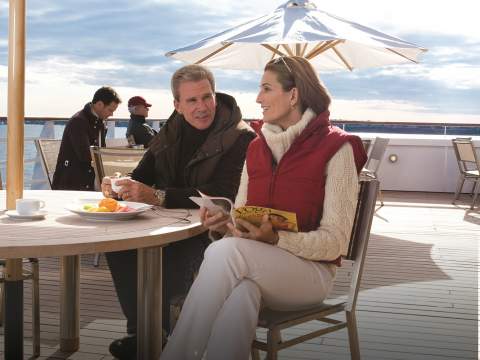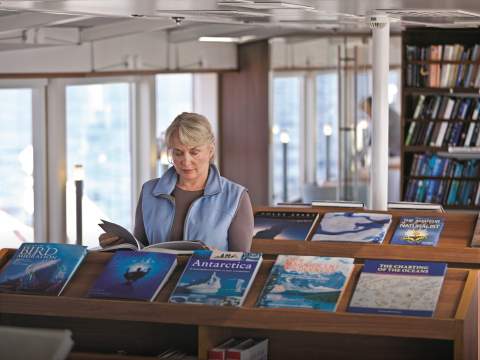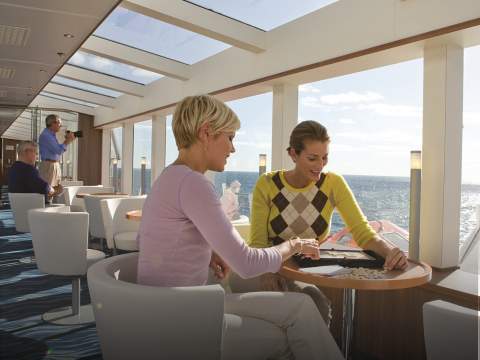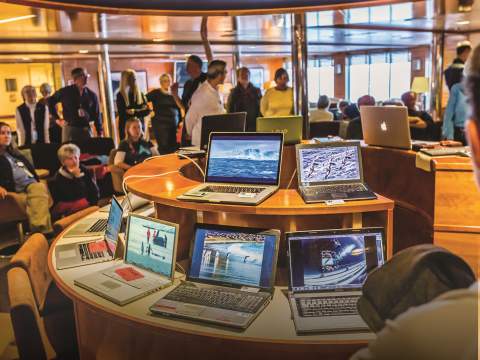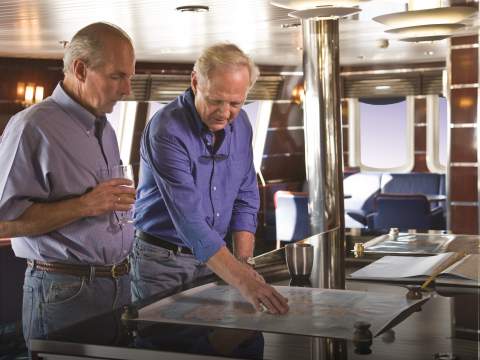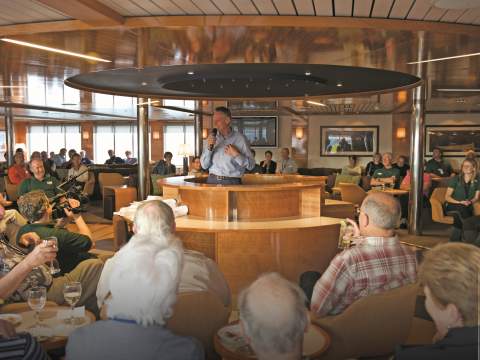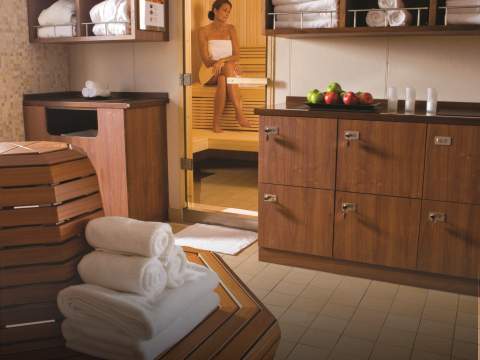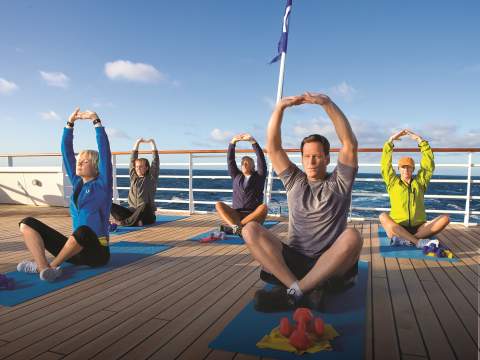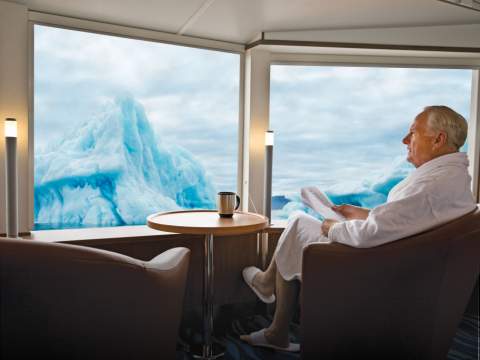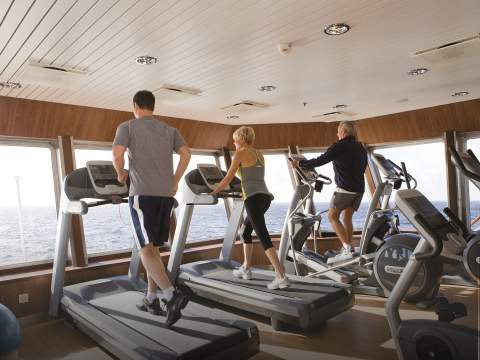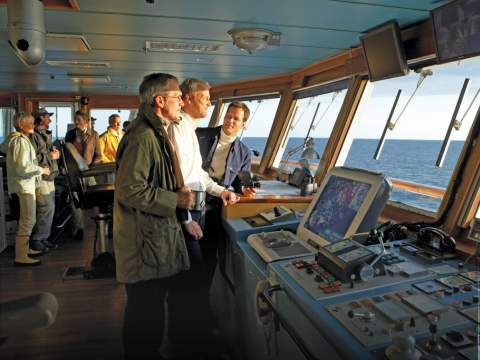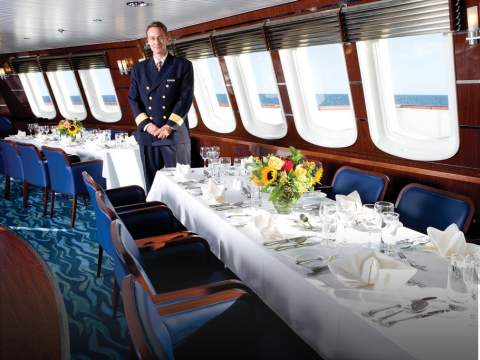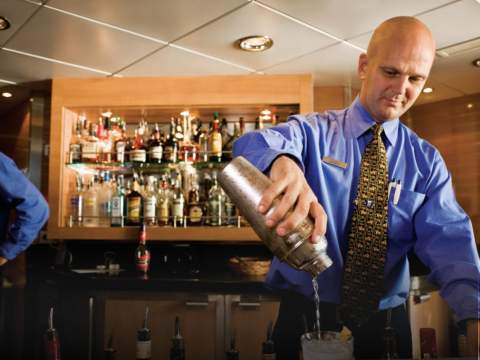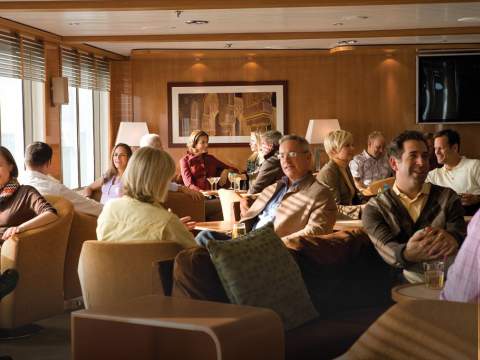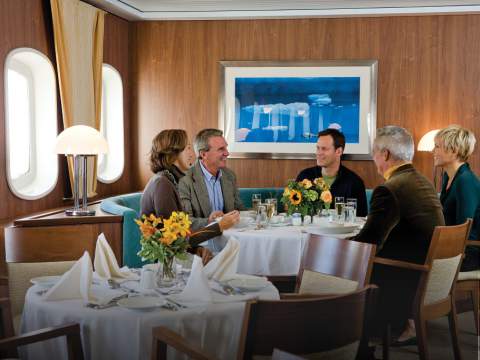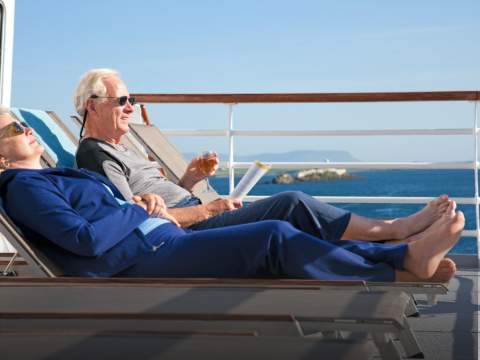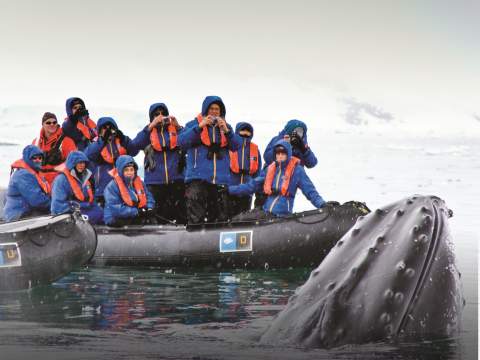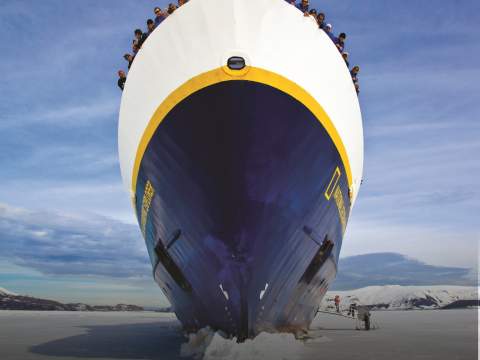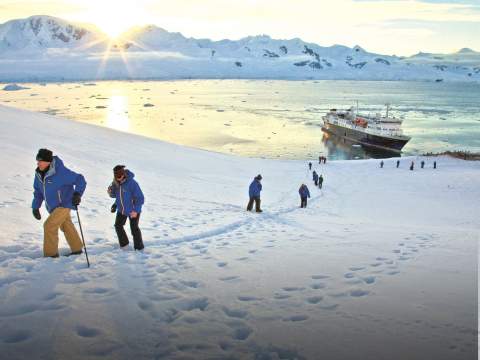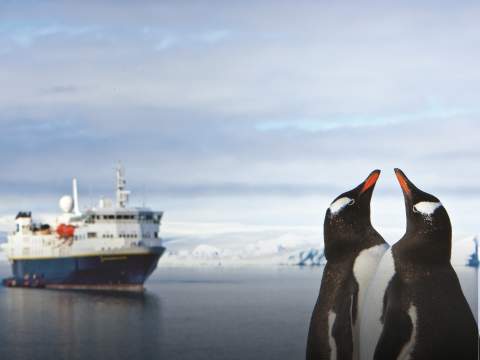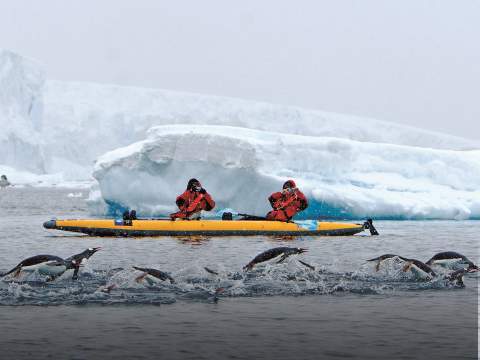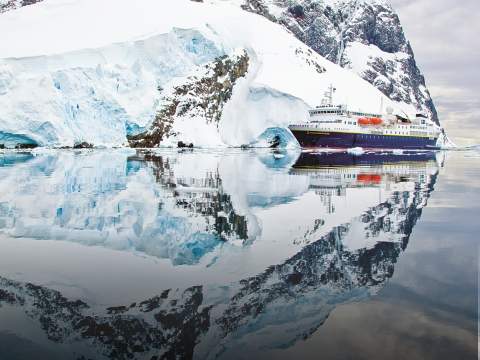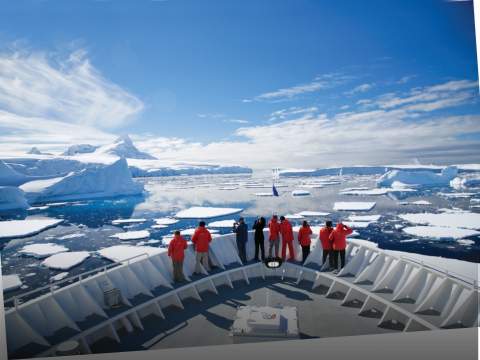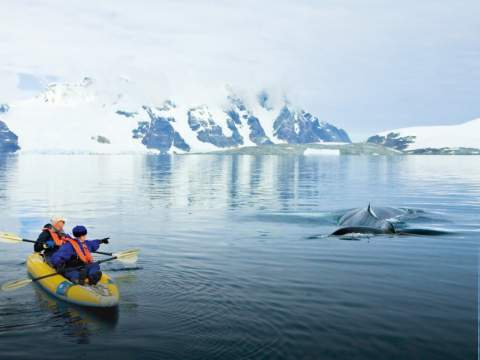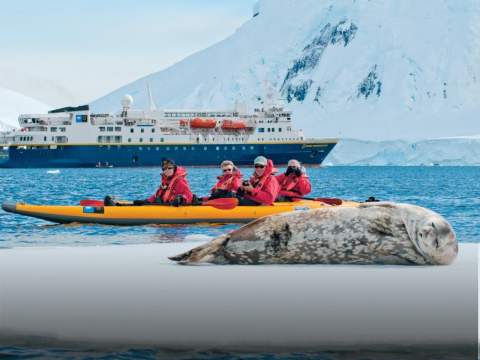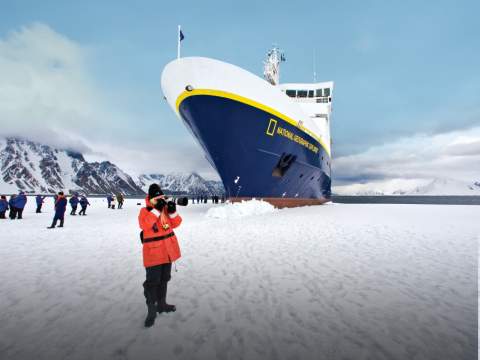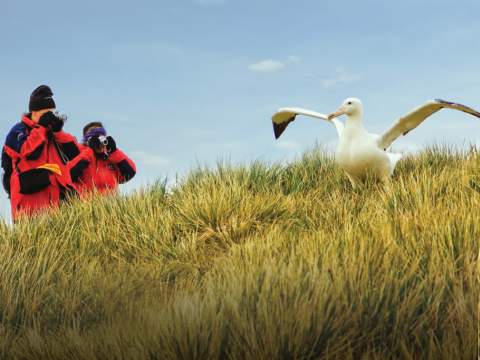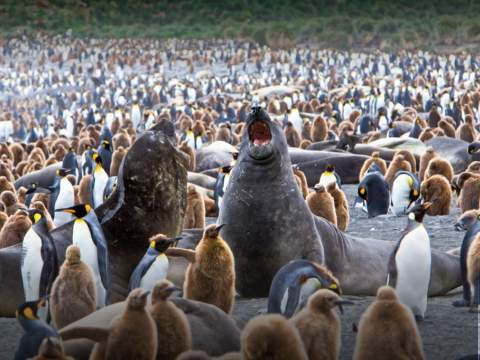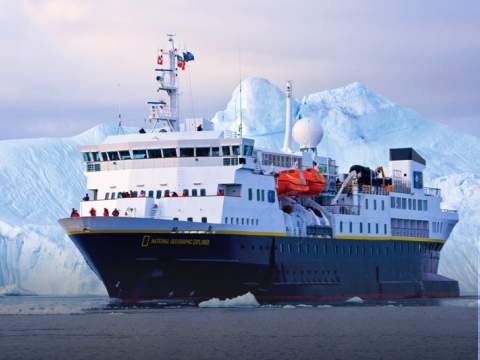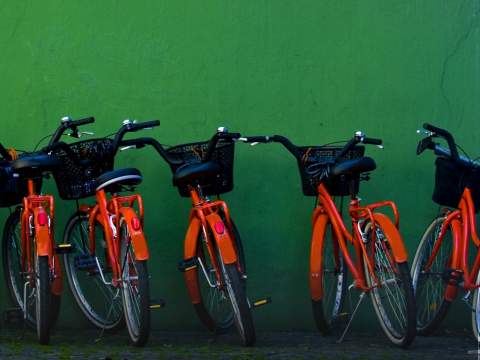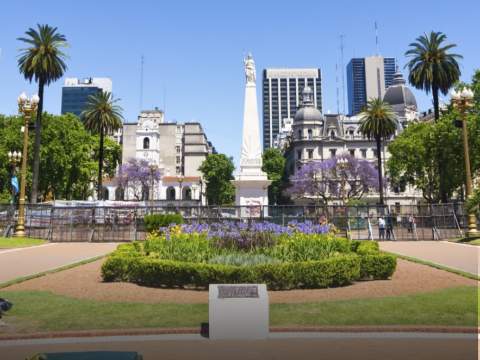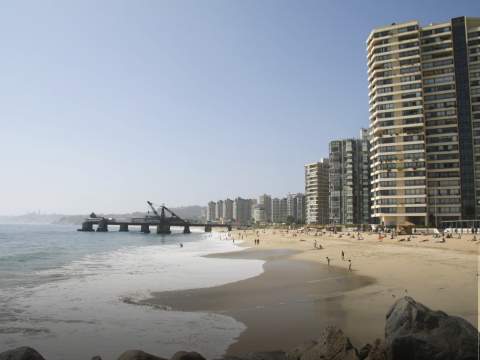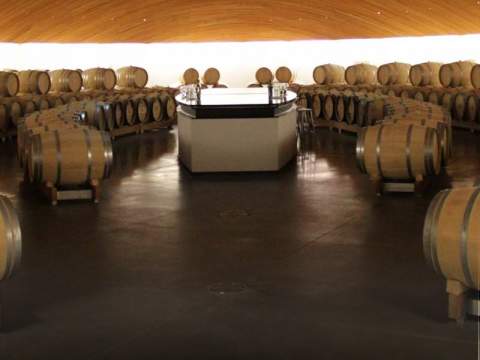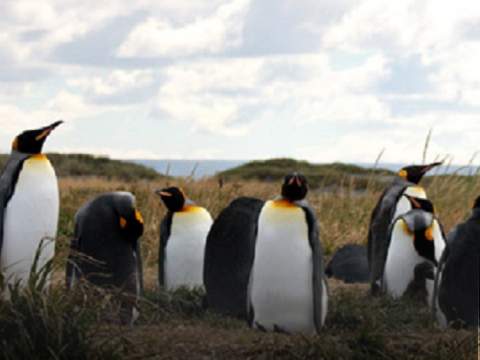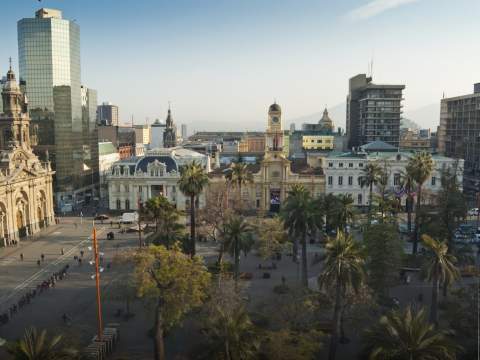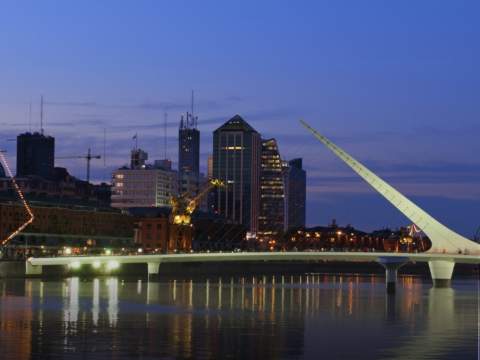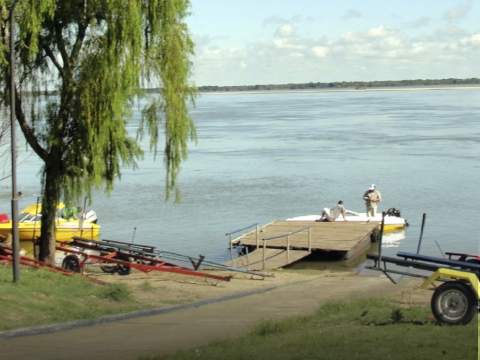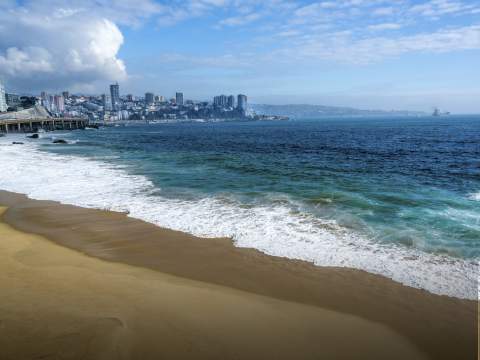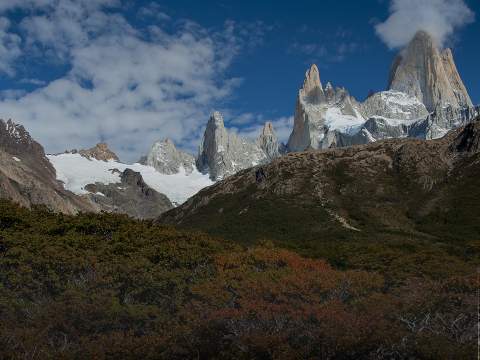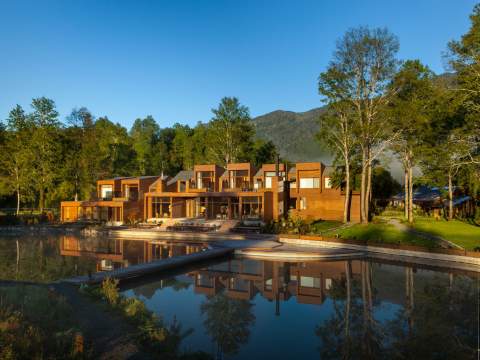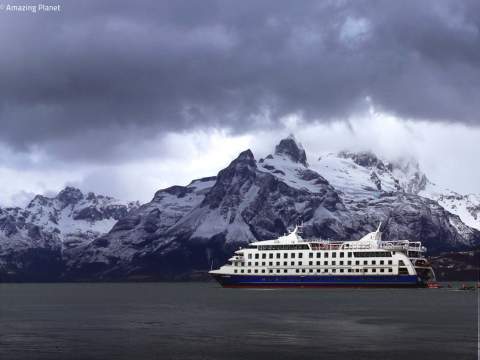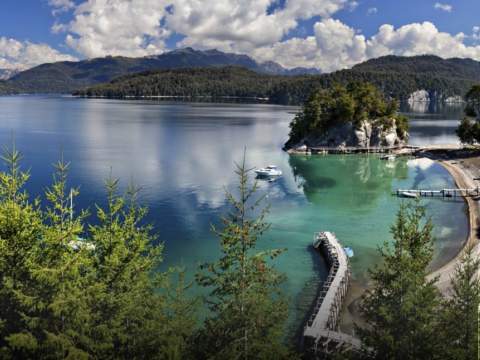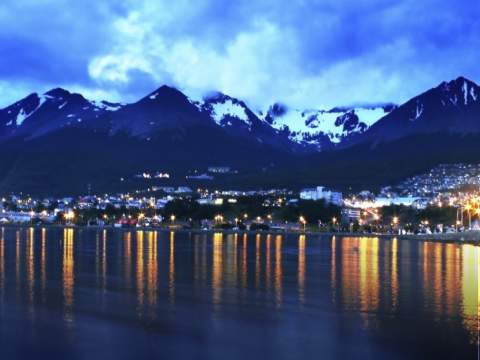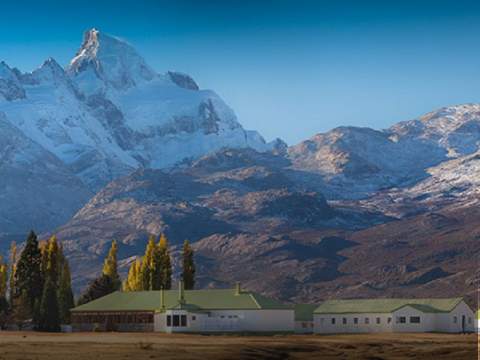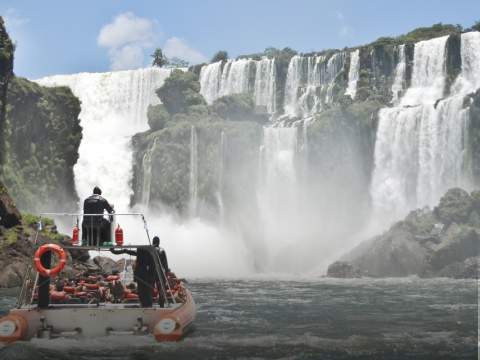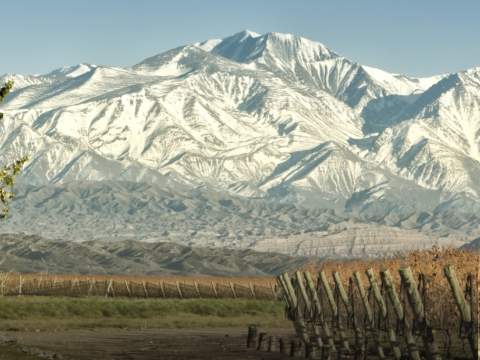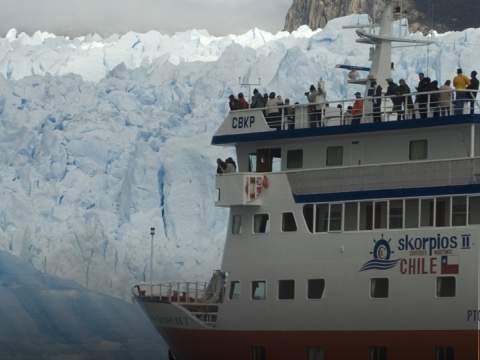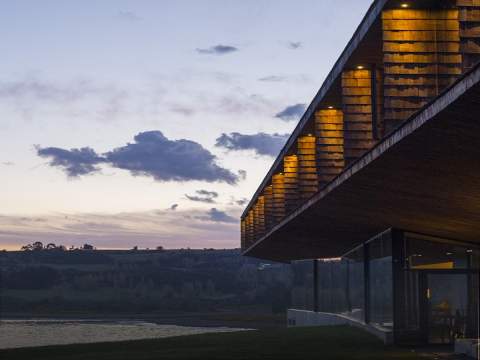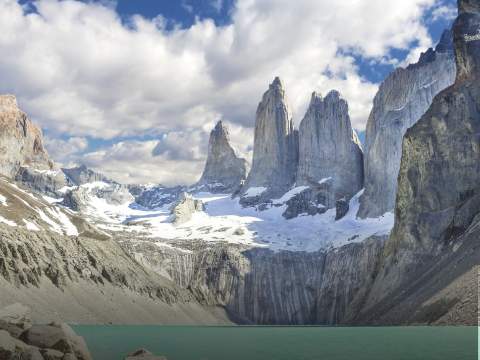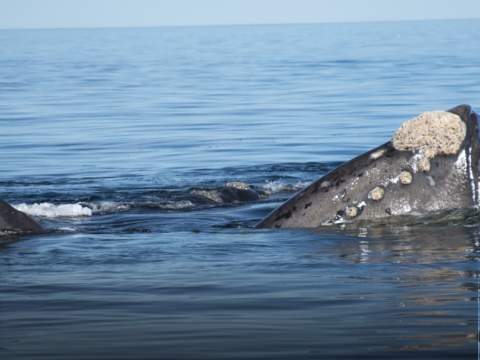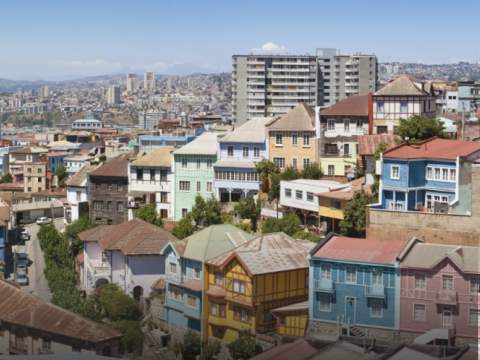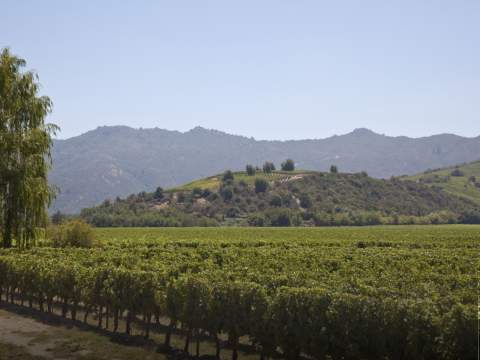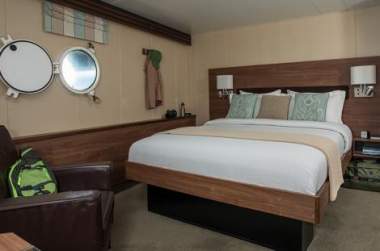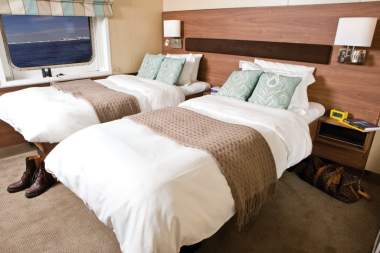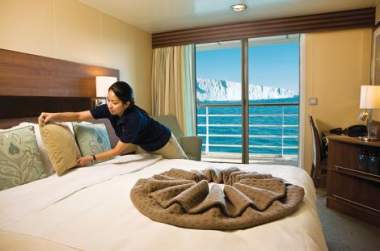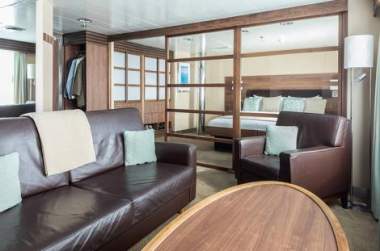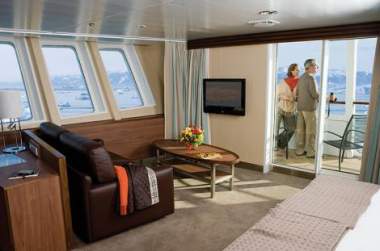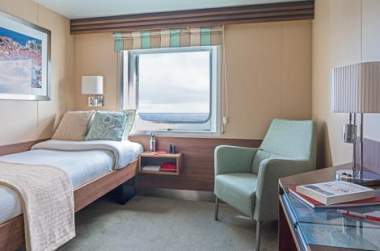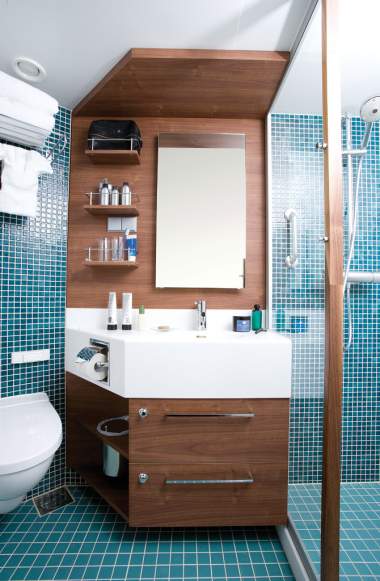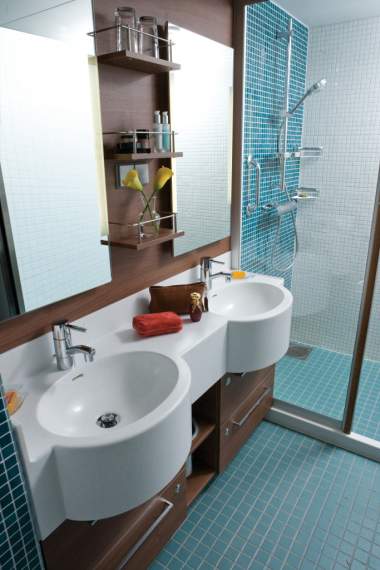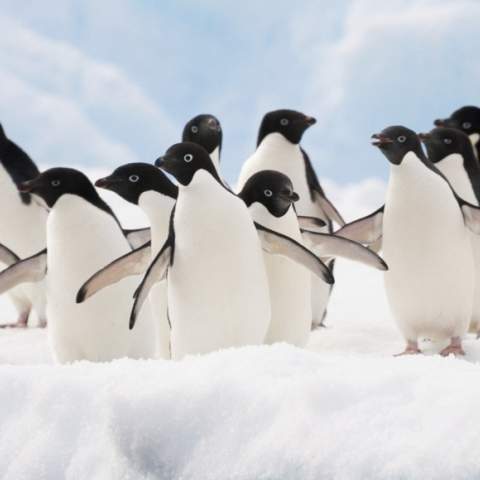National Geographic Explorer
Itinerary (Falkland Islands, South Georgia & Antarctica)
Itinerary (Falkland Islands & South Georgia)
Most Popular Antarctica Trips & Tours
| Trip | Price | Days | Highlights |
|---|---|---|---|
| Ocean Nova | $11,495 | 6 - 10 Days | Glaciers, Icebergs, Penguins, Whales, Kayaking, Hiking, Snowshoeing |
| Sea Spirit | $7,895 | 11 - 23 Days | Glaciers, Icebergs, Whales, Penguins, Hiking, Kayaking, Camping, Photography |
| Ushuaia | $5,460 | 10 - 20 Days | Glaciers, Icebergs, Whales, Penguins, Hiking |
- DAY 1: Arrive Buenos Aires, Argentina
Arrive in the sophisticated city of Buenos Aires, Argentina’s cosmopolitan capital - reminiscent of the European capitals, with a vibrant flavor all its own. Check into the Alvear Art Hotel (or similar) and enjoy lunch with your fellow travelers. In the afternoon, embark on an excursion to view the highlights of this exciting city from the Beaux Arts palaces on grand boulevards of the old aristocracy; the public art, parks and the legacy of Eva Peron. Please contact us for additional extension options in Buenos Aires. (L)
- DAY 2: Buenos Aires - Ushuaia, Argentina - Embark
In the morning, you will be transferred to the airport for a private charter flight to Ushuaia, the southernmost city in the world. Upon arrival, you’ll enjoy lunch during a catamaran cruise of the scenic Beagle Channel before embarking your Antarctic expedition vessel. (B,L,D)
- DAY 3: Drake Passage
Awake this morning well into our journey across the Drake Passage. Lying between Cape Horn and the Antarctic Peninsula, the Drake holds a distinct place in maritime lore. Sometimes misty and gray, other times calm and clear, crossing the legendary Drake Passage is unforgettable and a milestone in any traveler’s personal travel history. In this area you may see Wandering Albatrosses, Grey Headed Albatrosses, Black- browed Albatrosses, Light- mantled Sooty Albatrosses, Cape Pigeons, Southern Fulmars, Wilson’s Storm Petrels, Blue Petrels and Antarctic Petrels. As you cross the Antarctica convergence, you will notice a significant change in the environment as colder temperatures surround you and the first icebergs come into view, and you will know that the White Continent is approaching. (B,L,D)
- DAYS 4-9: Antarctic Peninsula
With long hours of daylight at this time of year, you will easily make the most of your five days exploring the Antarctic Peninsula and its surrounding islands. The veteran expedition team, with their expert knowledge of Antarctica’s waters, will craft an expedition where you will learn more, see more and experience more. Your captain will sail through incredible landscapes, passing by rugged mountains, glaciers, and icebergs. In keeping with the nature of an expedition, the schedule and itinerary is flexible to give you the best experience possible. Flexibility will enable you to take advantage of the unexpected - perhaps watching a 40-ton whale surface off the bow, taking an after-dinner Zodiac cruise, or heading out on an extra landing during the day. You will enjoy a variety of outings daily, allowing you to experience Antarctica with all of your senses as you walk ashore, cruise in Zodiacs, kayak among the icebergs and experience close encounters with wildlife. You will sail through the incomparable Lemaire Channel, land on the “White Continent”, see seals wallowing on the beach, hear the cries of penguins, and experience the huge, nurturing silence of this pristine place. One day, you may take a Zodiac foray amid towering bergs under a bright sun, walk along the shoreline amid a huge penguin colony, hike to a summit for a breathtaking view, or kayak along a cliff-side rookery in search of blue-eyed shags. And the next, you’ll have the thrill of watching the powerful ship crunch through the pack ice, or step ashore to the cries of thousands of Gentoo penguins. You’ll learn from the top-notch experts how climate change affects the penguin populations, how to identify the different penguins and how best to capture images of those same penguins from a National Geographic photographer. Back aboard, the Undersea Specialist may present video from that day’s dive — rare images taken up to 1,000 feet below the surface using the ROV. (B,L,D)
- DAYS 10-11: Drake Passage
As the expedition nears its end in the Antarctica Peninsula, you’ll head back to the open sea and sail again through the Drake Passage. As you sail back to Ushuaia, an albatross or two may join the avian escort of seabirds that cross the bow, and the staff spotters will keep an eye out for marine life. Talks from the staff will reflect on all you have seen and learned and there’ll be plenty of time to share photos with the onboard National Geographic photographer, enjoy the ship’s amenities, catch up on the book you haven’t had a minute to read, and write emails home, saying “don’t want this to end.” (B,L,D)
- DAY 12: Disembark Ushuaia - Buenos Aires
After breakfast, you will disembark in Ushuaia with time to explore before proceeding to the airport for your charter flight to Buenos Aires. Upon arrival, you’ll connect with your flight home or continue to another location in Argentina. (B,L)
Key: (B)reakfast (L)unch (D)inner
- DAY 1: Arrive Buenos Aires, Argentina
**PLEASE NOTE: This itinerary runs in reverse direction for some departures. Please inquire for details.**
Arrive in the sophisticated city of Buenos Aires, Argentina’s cosmopolitan capital - reminiscent of the European capitals, with a vibrant flavor all its own. Check into the Alvear Art Hotel (or similar) and enjoy lunch with your fellow travelers. In the afternoon, embark on an excursion to view the highlights of this exciting city from the Beaux Arts palaces on grand boulevards of the old aristocracy; the public art, parks and the legacy of Eva Peron. Please contact us for additional extension options in Buenos Aires. (L)
- DAY 2: Buenos Aires - Ushuaia, Argentina - Embark
In the morning, you will be transferred to the airport for a private charter flight to Ushuaia, the southernmost city in the world. Upon arrival, you’ll enjoy lunch during a catamaran cruise of the scenic Beagle Channel before embarking your Antarctic expedition vessel. (B,L,D)
- DAY 3: At Sea
The day is spent at sea, settling into shipboard life, spending time on deck and on the bridge, scanning for seabirds (notably the albatross), and listening to informal discussions from the naturalist staff to prepare you for the wildness ahead in the Falklands. (B,L,D)
- DAYS 4-5: Falkland Islands
You will spend the next two days exploring the Falkland Islands, seeing the human face of the region, reminiscent of Great Britain, with grazing sheep, tea and crumpets. Each Falkland Island is a variation on the theme of topographical beauty with white-sand beaches, vaulting cliffs, windswept moors and the sunlit yellows and sage greens of waving tussock grass. Here you will get your first taste of the incredible wildlife that you will experience during your expedition, as the Falklands boast thousands of irresistible Gentoo, Rockhopper and Magellanic penguins, as well as King cormorants, herds of Fur and Elephant seals and the largest albatross colony in the world. You’ll have time to stroll the photogenic Victorian-style town of Port Stanley, meet the hospitable locals, hoist a few at the famous Upland Goose pub and visit the evocative Anglican Cathedral with its archway of whalebones. (B,L,D)
- DAYS 6-7: At Sea
These two days are at sea Whales beneath, birds above, as your voyage continues to legendary South Georgia. The top-notch naturalists will prepare you for the exciting days ahead with presentations on the wildlife of South Georgia, and, of course, the inspiring story of Ernest Shackleton and the Endurance. (B,L,D)
- DAYS 8-12: South Georgia Island
For the next five days, you will explore the spectacular coastline of South Georgia, jam packed with wildlife, breathtaking scenery and soaring cliffs. This is the ultimate destination for jaw-dropping landscapes, boundless wildlife and captivating history. Steeped in Shackleton and whaling lore, and covered mostly in glaciers, South Georgia explodes with life: Gentoo, Rockhopper and Macaroni penguins, enormous Elephant seals and a thriving Fur seal population.
In keeping with the nature of an expedition, the schedule is flexible with opportunities for walking, hiking, kayaking and Zodiac excursions. You will paddle a kayak amid curious Fur seals, explore in a Zodiac among the bergs and compare aperture settings side-by-side with a National Geographic photographer. Hundreds of Antarctic Fur seals will greet you as the Zodiacs make landfall, and you will witness one of the world’s great wildlife spectacles: literally 200,000 stately King penguins on a single beach!
As your captain leisurely circumnavigates the island, the plan will be to make stops every day including: Grytviken, the final resting place of the great explorer, Sir Ernest Shackleton, and Stromness Bay, where Shackleton, Tom Crean and Frank Worsley finally reached aid at a whaling station. South Georgia is an unforgettable part of the Endurance story, and you’ll have the opportunity to hike in the footsteps of these great men, hear their extraordinary tale of survival, and hoist a toast at the gravesite of “The Boss”, Sir Ernest Shackleton. (B,L,D)
- DAYS 13-14: At Sea, Pass Elephant Island
As your ship voyages south over the next two days, you may head up to the Bridge to watch for icebergs and observe expert navigation at work as your skilled Captain and officers sail these historic waters. Each day the naturalists will offer talks that add depth to your experience. There’ll also be time to enjoy a massage in the wellness center, workout in the gym, and browse in the library. As you cross the Antarctica convergence, you will notice a significant change in the environment as colder temperatures surround you and the first icebergs come into view, and you will know that the White Continent is approaching. Weather and ice permitting, your Captain may even pass by legendary Elephant Island, where the crew of the Endurance landed and where Shackleton and five of his men set of on their incredible journey to South Georgia. (B,L,D)
- DAYS 15-19: Antarctic Peninsula
With long hours of daylight at this time of year, you will easily make the most of your days exploring the Antarctic Peninsula and its surrounding islands. The veteran expedition team, with their expert knowledge of Antarctica’s waters, will craft an expedition where you will learn more, see more and experience more. Your captain will sail through incredible landscapes, passing by rugged mountains, glaciers, and icebergs. In keeping with the nature of an expedition, the schedule and itinerary is flexible to give you the best experience possible. Flexibility will enable you to take advantage of the unexpected - perhaps watching a 40-ton whale surface off the bow, taking an after-dinner Zodiac cruise, or heading out on an extra landing during the day. You will enjoy a variety of outings daily, allowing you to experience Antarctica with all of your senses as you walk ashore, cruise in Zodiacs, kayak among the icebergs and experience close encounters with wildlife. You will sail through the incomparable Lemaire Channel, land on the “White Continent”, see seals wallowing on the beach, hear the cries of penguins, and experience the huge, nurturing silence of this pristine place. One day, you may take a Zodiac foray amid towering bergs under a bright sun, walk along the shoreline amid a huge penguin colony, hike to a summit for a breathtaking view, or kayak along a cliff-side rookery in search of blue-eyed shags. And the next, you’ll have the thrill of watching the powerful ship crunch through the pack ice, or step ashore to the cries of thousands of Gentoo penguins. You’ll learn from the top-notch experts how climate change affects the penguin populations, how to identify the different penguins and how best to capture images of those same penguins from a National Geographic photographer. Back aboard, the Undersea Specialist may present video from that day’s dive — rare images taken up to 1,000 feet below the surface using the ROV. (B,L,D)
- DAYS 20-21: Drake Passage
As the expedition nears its end in the Antarctica Peninsula, you’ll head back to the open sea and sail again through the Drake Passage. As you sail back to Ushuaia, an albatross or two may join the avian escort of seabirds that cross the bow, and the staff spotters will keep an eye out for marine life. Talks from the staff will reflect on all you have seen and learned and there’ll be plenty of time to share photos with the onboard National Geographic photographer, enjoy the ship’s amenities, catch up on the book you haven’t had a minute to read, and write emails home, saying “don’t want this to end.” (B,L,D)
- DAY 22: Disembark Ushuaia - Buenos Aires
After breakfast, you will disembark in Ushuaia with time to explore before proceeding to the airport for your charter flight to Buenos Aires. Upon arrival, you’ll connect with your flight home or continue to another location in Argentina. (B,L)
Key: (B)reakfast (L)unch (D)inner
- DAY 1: Arrive Buenos Aires, Argentina
- Arrive in the sophisticated city of Buenos Aires, Argentina’s cosmopolitan capital - reminiscent of the European capitals, with a vibrant flavor all its own. Check into the Sofitel (or similar) and enjoy lunch with your fellow travelers. In the afternoon, embark on an excursion to view the highlights of this exciting city from the Beaux Arts palaces on grand boulevards of the old aristocracy; the public art, parks and the legacy of Eva Peron. Please contact us for additional extension options in Buenos Aires. (L)
- DAY 2: Buenos Aires - Ushuaia - Embark
- In the morning, you will be transferred to the airport for a private charter flight to Ushuaia, the southernmost city in the world. Upon arrival, you’ll enjoy lunch during a catamaran cruise of the scenic Beagle Channel before embarking your expedition vessel. (B,L,D)
- DAY 3: At Sea
- The day is spent at sea, settling into shipboard life, spending time on deck and on the bridge, scanning for seabirds (notably the albatross), and listening to informal discussions from the naturalist staff to prepare you for the wildness ahead in the Falklands. (B,L,D)
- DAY 4-5: Falkland Islands
- Each Falkland Island is a variation on the theme of topographical beauty with white-sand beaches, vaulting cliffs, windswept moors and the sunlit yellows and sage greens of waving tussock grass. Here you will get your first taste of the incredible wildlife that you will experience during your expedition, as the Falklands boast thousands of irresistible Gentoo, Rockhopper and Magellanic penguins, as well as King cormorants, herds of Fur and Elephant seals and the largest albatross colony in the world. A visit to Port Stanley offers a chance to meet the hospitable locals, and stroll around this remote Victorian town. (B,L,D)
- DAY 6-7: At Sea
- These two days are at sea as your voyage continues to South Georgia. During this time, you will learn about the fascinating history of Antarctic exploration, as well as the flora, fauna and geology of South Georgia. A lookout is kept to identify the seabirds that follow us: Wandering albatross, Prions and Black-browed albatross. (B,L,D)
- DAY 8-12: South Georgia
- For the next five days, you will explore the spectacular coastline of South Georgia, jam packed with wildlife, breathtaking scenery and soaring cliffs. This is the ultimate destination for jaw-dropping scenery, boundless wildlife and captivating history. Steeped in Shackleton and whaling lore, and covered mostly in glaciers, South Georgia explodes with life: Gentoo, Rockhopper and Macaroni penguins, enormous Elephant seals and a thriving Fur seal population.
In keeping with the nature of an expedition, the schedule is flexible with opportunities for walking, hiking, kayaking and Zodiac excursions. You will paddle a kayak amid curious Fur seals, explore in a Zodiac among the bergs and compare aperture settings side-by-side with a National Geographic photographer. Hundreds of Antarctic Fur seals will greet you as the Zodiacs make landfall, and you will witness one of the world’s great wildlife spectacles: literally 200,000 stately King penguins on a single beach!
As your captain leisurely circumnavigates the island, the plan will be to make stops every day including: Grytviken, the final resting place of the great explorer, Sir Ernest Shackleton, and Stromness Bay, where Shackleton, Tom Crean and Frank Worsley finally reached aid at a whaling station. South Georgia is an unforgettable part of the Endurance story, and you’ll have the opportunity to hike in the footsteps of these great men, hear their extraordinary tale of survival, and hoist a toast at the gravesite of “The Boss”, Sir Ernest Shackleton. (B,L,D)
- DAY 13-14: At Sea
- As you sail back toward the Falkland Islands, with whales beneath and birds above, you will head out on deck or up to the Bridge to observe expert navigation at work as your skilled Captain and officers sail these waters. Talks from the staff will reflect on all you have seen and learned and there’ll be plenty of time to share photos with the onboard National Geographic photographer, catch up on the book you haven’t had a minute to read, and enjoy the ship’s amenities, such as a wellness treatment, or logging some time in the gym. (B,L,D)
- DAY 15: Falkland Islands
- Your journey across the South Atlantic Ocean takes you once more to the island archipelago that teems with nature and wildlife. You will take a last walk along the beautiful white-sand beaches, meander through tussock grass or sit atop a cliff and ponder the views. (B,L,D)
- DAY 16: At Sea
- As the expedition nears its end, you’ll have one last chance to view the marine life of these southern waters before your ship sails again through the Beagle Channel and returns to Ushuaia. (B,L,D)
- DAY 17: Disembark Ushuaia - Buenos Aires
- After breakfast, you will disembark in Ushuaia with time to explore before proceeding to the airport for your charter flight to Buenos Aires. Upon arrival, you’ll connect with your flight home or continue to another location in Argentina. (B,L)
Key: (B)reakfast (L)unch (D)inner
Weather
When to Visit- jan
- feb
- mar
- apr
- may
- jun
- jul
- aug
- sep
- oct
- nov
- dec
You may also wish to schedule your trip according to what wildlife activities you are likely to observe at different points during the season, details below:
o Late October and November: The early part of the season showcases a number of highlights. Landing sites are at their most pristine. The possibility of seeing sea ice is present early on, before it breaks up later on in the season. Late October to early November sees Adélie, Chinstrap and Gentoo adult penguins and Antarctic-breeding seabirds starting to come ashore to their breeding sites where they commence courtship rituals and nest building. Shortly thereafter eggs are laid and incubated. Emperor penguins can be seen on the frozen Weddell Sea (visited occasionally by ice-strengthened expedition ships on special itineraries).
Spring flowers begin blooming in the Falkland Islands (Islas Malvinas) and elephant seals are actively courting in South Georgia. South Georgia's female king penguins lay their eggs in November and the parents can be seen "carrying" eggs on their feet so that the parent can shuffle around the colony while the other adult goes out to sea to feed. "Oakum Boys" — king penguin chicks from the previous season — can also be seen in the rookeries. Fur seals litter the beaches in South Georgia with the males aggressive and ready to mate.
o December and January: The increased number of daylight hours brings exceptional opportunities for photographers and non-photographers alike, and the expeditions make the most of the summer weather and continuous hours of daylight. Research activity in the Peninsula at the scientific bases is at its peak. Penguin chicks begin hatching in the Falklands (Islas Malvinas); followed by hatchings in mid- to late-December at sites in the Antarctic Peninsula. Some 30 days after hatching, penguin chicks can be found in "crèches," resembling a nursery of sorts, which leaves both adults free to replenish their food supply. An exciting time of this part of the season is when the parent returns with food and the hungry chicks are persistent in being fed, running after the parent (or any adult penguin with food) in a "feeding chase." Whale sightings of baleen and toothed whales escalate in the Peninsula area. Seal pups can be seen on the beaches in South Georgia. Sea ice is also beginning to break up which allows for the possibility to begin to access to rarely visited sites in the Weddell Sea, Ross Sea and within the Antarctic Circle.
o February and March: Sightings of whales are at their peak in the Peninsula and an increasing number of fur seals can be found along the Peninsula and offshore islands. Young fur seals are also quite playful in South Georgia. Penguin colonies are very active with the penguin chicks beginning their molt - losing their fuzzy down and developing their adult plumage. During this timeframe, the parents will abandoned their chicks, and return out to sea to feed and fatten up for their own molting stage. Most colonies (Adélie, Chinstrap and Gentoo) are nearly vacated by the end of February to early March. Blooming snow algae is prevalent and receding pack ice has reached its peak for the season, allowing for easier exploration within the Weddell Sea, Ross Sea and Antarctic Circle.
Maps
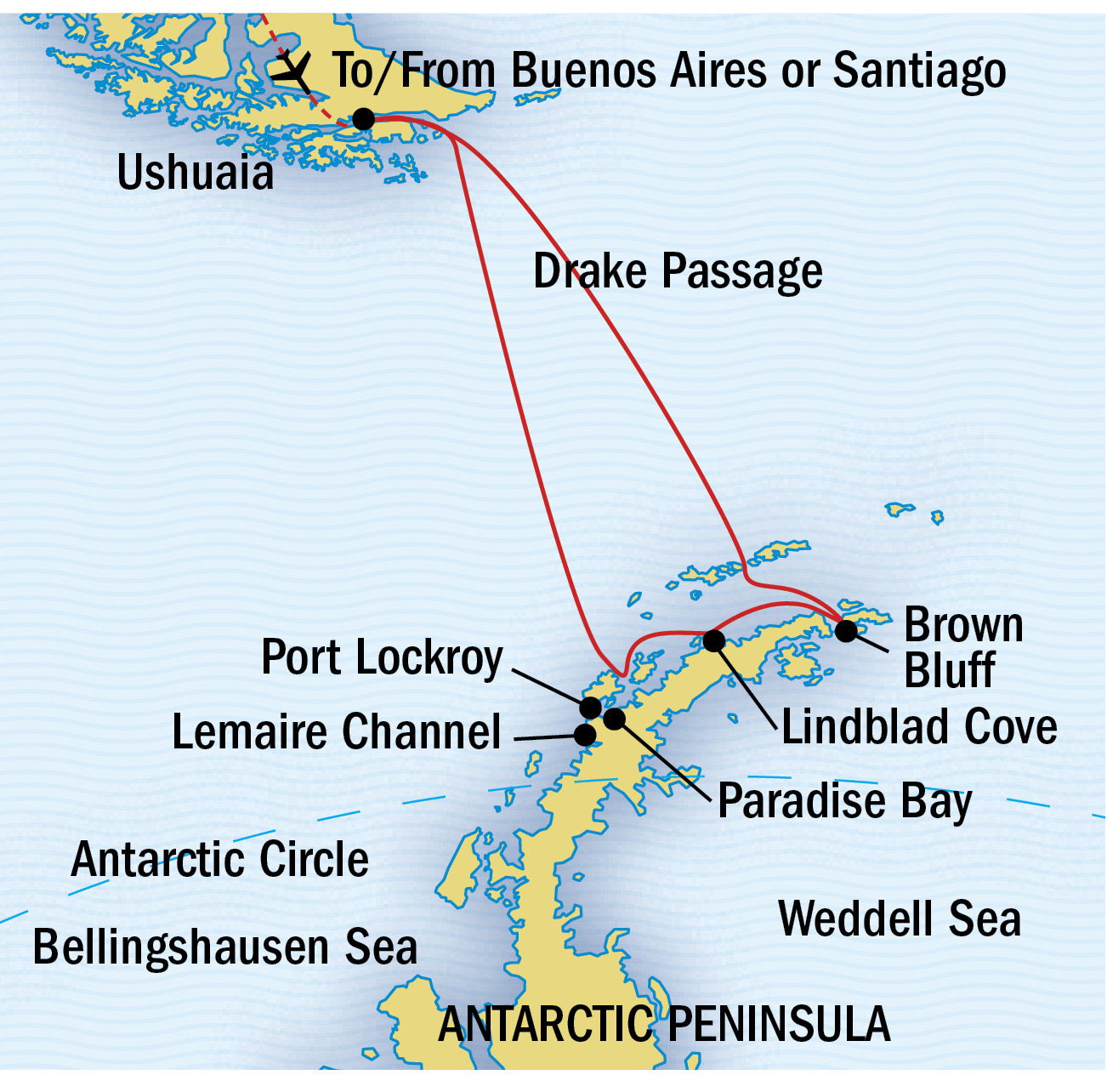
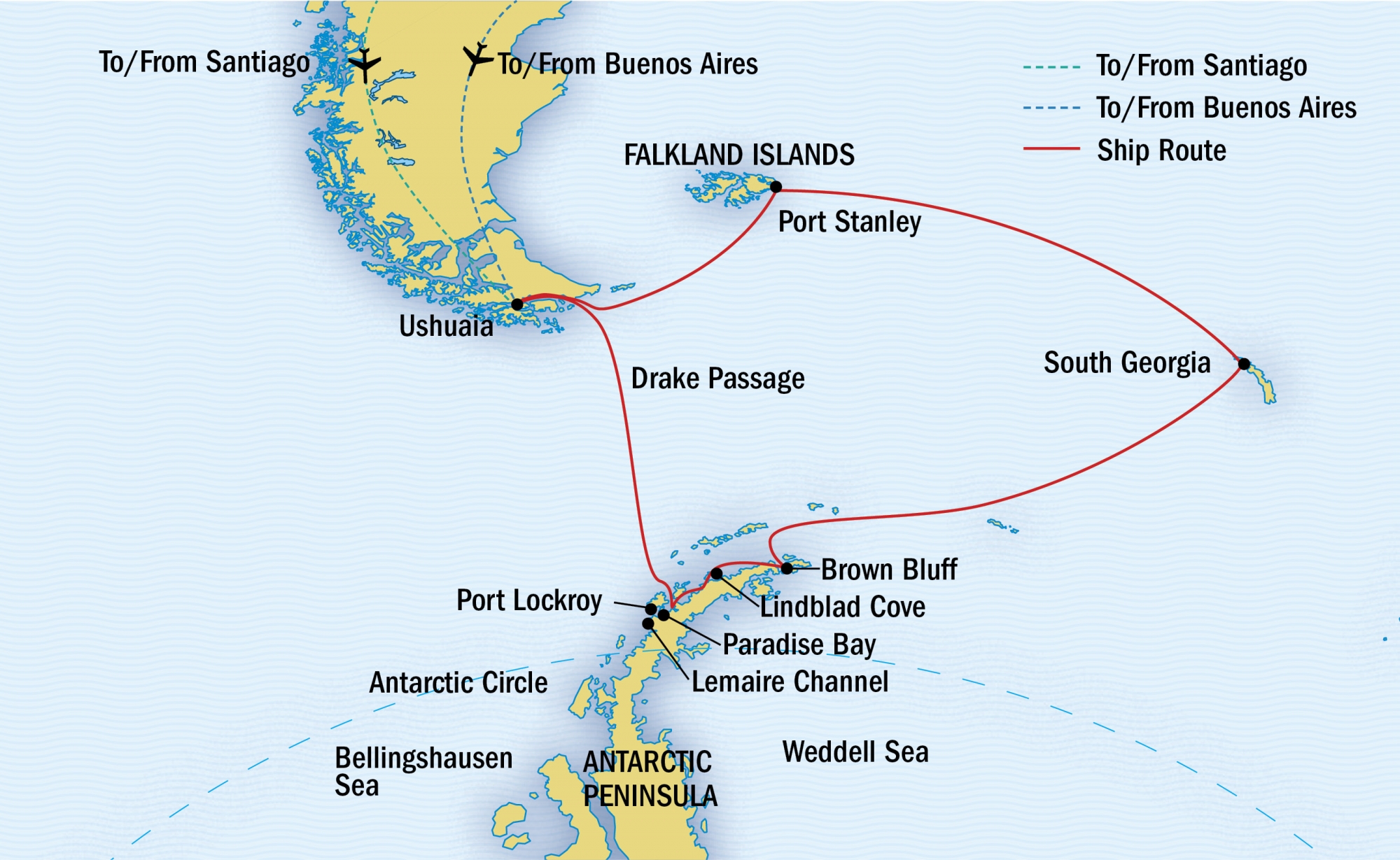
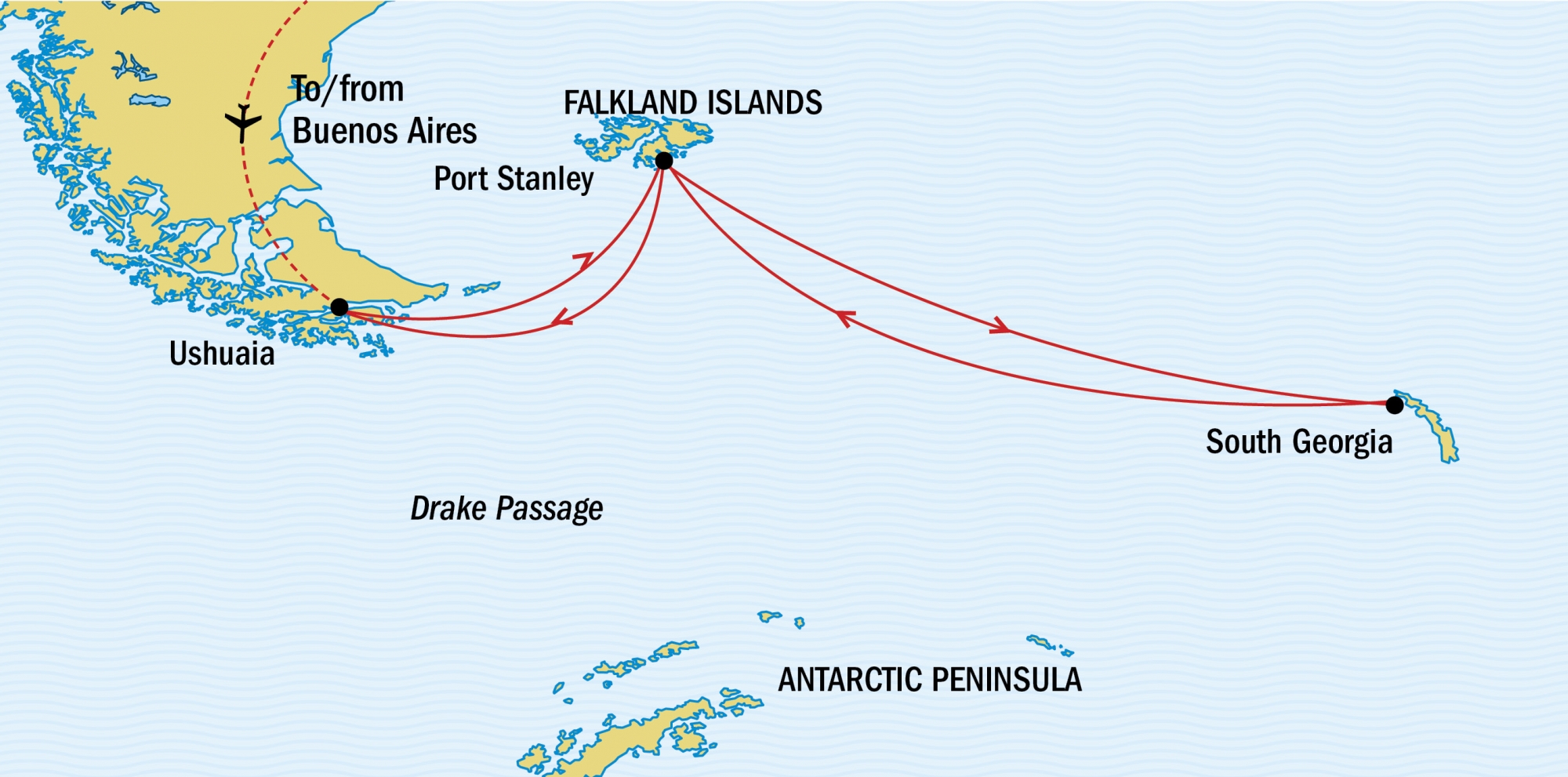
Classic Antarctica
- Pricing
Price Range Per Person (Category 1 to Category 7):
12 Day Expedition $15,080 - $28,200 per person
12 Day Expedition (Holiday dates) $16,760 - $31,800 per person
-There is a supplemental fee for the group charter flight and pre-trip hotel.
-Please inquire for single supplement pricing. A solo traveler willing to share a cabin with another passenger (or passengers) of the same gender can avoid the single supplement.
-Contact us for details on optional activities available on your particular departure.- Included in tour cost
- Antarctica cruise accommodations
- All meals onboard Antarctica cruise
- Airport transfers for group charter flights - Included for some departures
- 1 night's accommodations Buenos Aires - Included for some departures
- Open bar onboard Antarctica cruise
- All shore excursions throughout voyage by zodiac
- Photography Program
- Kayaking
- All gratuities onboard Antarctica cruise (except spa & salon)
- Expedition parka
- English-speaking certified guides
- Entrance fees for all scheduled tours, national parks & archaeological sites
- Southern Explorations pre-departure services
- Excluded from tour cost
- International airfare to/from Argentina and/or Chile
- Group charter flight (Buenos Aires/Ushuaia/Buenos Aires)
- Medical evacuation insurance (mandatory)
- Trip cancellation/interruption insurance (recommended)
- Rubber boots and other personal gear
- Personal expenses (airport taxes, spa services, salon services, medical consultations/prescriptions, laundry, valet services, telecommunication charges, some premium wine & spirit selections, etc.)
- Expedition DVD
Falkland Islands, South Georgia & Antarctica
- Pricing
Price Range Per Person (Category 1 to Category 7):
22 Day Expedition $25,890 - $50,150 per person
-There is a supplemental fee for the group charter flight and pre-trip hotel.
-Please inquire for single supplement pricing. A solo traveler willing to share a cabin with another passenger (or passengers) of the same gender can avoid the single supplement.
-Contact us for details on optional activities available on your particular departure.- Included in tour cost
- Antarctica cruise accommodations
- All meals onboard Antarctica cruise
- Airport transfers for group charter flights - Included for some departures
- 1 night's accommodations Buenos Aires - Included for some departures
- Open bar onboard Antarctica cruise
- All shore excursions throughout voyage by zodiac
- Photography Program
- Kayaking
- All gratuities onboard Antarctica cruise (except spa & salon)
- Expedition parka
- English-speaking certified guides
- Entrance fees for all scheduled tours, national parks & archaeological sites
- Southern Explorations pre-departure services
- Excluded from tour cost
- International airfare to/from Argentina and/or Chile
- Group charter flight (Buenos Aires/Ushuaia/Buenos Aires)
- Medical evacuation insurance (mandatory)
- Trip cancellation/interruption insurance (recommended)
- Rubber boots and other personal gear
- Personal expenses (airport taxes, spa services, salon services, medical consultations/prescriptions, laundry, valet services, telecommunication charges, some premium wine & spirit selections, etc.)
- Expedition DVD
Falkland Islands & South Georgia
- Pricing
Price Range Per Person (Category 1 to Category 7):
17 Day Expedition $18,430 - $35,550 per person
-There is a supplemental fee for the group charter flight and pre-trip hotel.
-Please inquire for single supplement pricing. A solo traveler willing to share a cabin with another passenger (or passengers) of the same gender can avoid the single supplement.
-Contact us for details on optional activities available on your particular departure.- Included in tour cost
- Antarctica cruise accommodations
- All meals onboard Antarctica cruise
- Airport transfers for group charter flights - Included for some departures
- 1 night's accommodations Buenos Aires - Included for some departures
- Open bar onboard Antarctica cruise
- All shore excursions throughout voyage by zodiac
- Photography Program
- Kayaking
- All gratuities onboard Antarctica cruise (except spa & salon)
- Expedition parka
- English-speaking certified guides
- Entrance fees for all scheduled tours, national parks & archaeological sites
- Southern Explorations pre-departure services
- Excluded from tour cost
- International airfare to/from Argentina and/or Chile
- Group charter flight (Buenos Aires/Ushuaia/Buenos Aires)
- Medical evacuation insurance (mandatory)
- Trip cancellation/interruption insurance (recommended)
- Rubber boots and other personal gear
- Personal expenses (airport taxes, spa services, salon services, medical consultations/prescriptions, laundry, valet services, telecommunication charges, some premium wine & spirit selections, etc.)
- Expedition DVD
Classic Antarctica
- Trip Dates
- Availability changes constantly on Antarctica cruises. Please contact us for the most up-to-date availability.Tuesday, November 28, 2023 to Saturday, December 9, 2023Friday, December 8, 2023 to Tuesday, December 19, 2023Monday, December 18, 2023 to Friday, December 29, 2023Thursday, December 28, 2023 to Monday, January 8, 2024Sunday, January 7, 2024 to Thursday, January 18, 2024Wednesday, January 17, 2024 to Sunday, January 28, 2024Saturday, January 27, 2024 to Wednesday, February 7, 2024Tuesday, February 6, 2024 to Saturday, February 17, 2024
Falkland Islands, South Georgia & Antarctica
- Trip Dates
- Availability changes constantly on Antarctica cruises. Please contact us for the most up-to-date availability.Wednesday, November 8, 2023 to Wednesday, November 29, 2023Thursday, February 16, 2023 to Thursday, March 9, 2023
Falkland Islands & South Georgia
- Trip Dates
- Availability changes constantly on Antarctica cruises. Please contact us for the most up-to-date availability.
- Buenos Aires
- Hotel upgrades are available, please contact us to discuss your options.
-
4 Star
-
4 Star
-
5 Star
-
5 Star
-
One Day
-
4 Hours $120Bike through the nostalgic city of Buenos Aires, stop and enjoy restaurants, markets and historic sitesOne Day
-
Chile’s best white wines such as Sauvignon Blanc and Chardonnay
Cool-loving reds such as Pinot Noir and SyrahOne Day -
2 Hours $75Guided walking tour
Highlights of Buenos AiresOne Day -
10 Hours $260Visit the Pacific Coastal city of Valparaiso
Enjoy a seafood lunch at a local restaurantOne Day -
11 Hours $490100+ year old vines
Lunch Viu Manent Winery
Wine tastingOne Day -
1 Day $370Hiking
Glaciers
Horseback ridingOne Day -
3 Hours $230The Latin American Art Museum of Buenos Aires
Heft Collection Tour with Curator Ms. Heft
Fernandez Blanco MuseumOne Day -
4 Hours $275Take an inside look at the real life experiences of Buenos Aires' Jewish population, past and presentOne Day
-
13 Hours $615Mythical Strait of Magellan
Tierra del Fuego
Unique King Penguin ColonyOne Day -
4 hours $185Santa Rita Winery
Maipo Valley Wine Region
Chilean Wine TourOne Day -
4 Hours $120Historic Santiago sites
Plaza de Armas
Presidential Palace
Mercado Central - Sea Food Market
MuseumsOne Day -
4 Hours $285Take in a Tango show with dinner and round trip transfers includedOne Day
-
4 Hours $210Tour Buenos Aires, this beautiful city is called the Paris of South America,One Day
-
4 Hours $260Learn the sensual dance, the Tango at a milonga which is a tango hall frequented by local dancersOne Day
-
8 Hours $495This Buenos Aires tour takes you out of the city to experience what the nearby countryside has to offerOne Day
-
12 Hours $355Wine Tours and Coastal views
Catrala Vineyard
Outstanding White Wines
Pinot Noir
SyrahOne Day
Multi-Day
-
4 Days $1295Explore the magnificent vistas and fascinating history of Tierra del Fuego, at the southern tip of PatagoniaMulti-Day
-
4 Days $2,530Pristine areas in the Araucania RegionMulti-Day
-
5 days $3165Cape Horn National Park
Beagle Channel
Penguins
Glacier AlleyMulti-Day -
4 Days $1145Experience the heart of the Lakes District on this Patagonia tour based in the resort town of BarilocheMulti-Day
-
4 Days $1195Tierra del Fuego National Park
Beagle Channel
UshuaiaMulti-Day -
2 Days $895Colchagua is known as the “King of Chilean Red Wines” and a must-visit for aficionados of vino tintoMulti-Day
-
4 Days $1190Visit all highlight areas of the Island
Local Rapa Nui guidesMulti-Day -
2 Days $660Historic estancia
Horseback riding
4x4 tour
Glacier viewsMulti-Day -
3 Days $1295Considered one of South America’s most impressive sights, Iguazu isn’t exactly on the beaten pathMulti-Day
-
4 Days $1,195Visit the Argentine province where The Andes reach their highestMulti-Day
-
4 & 5 Days $2,320Experience archaeological wonders, offering breathtaking and unique viewsMulti-Day
-
5 Days $2375Amalia Glacier
El Brujo Glacier
Calvo Fjord
Montonas Fjord
Burnal Glacier
Pitt Channel and Guillard Glacier
More.....Multi-Day -
4 Days $3,070Chile’s Northern Patagonia
Picturesque villages and dramatic landscapes
Chiloe culture and traditionsMulti-Day -
4-5 Days $2,935Torres del Paine National Park
Explore all highlights
Outstanding LodgesMulti-Day -
3 Days $1370Whales
Penguins
Elephant Seals
Views & WildlifeMulti-Day -
2 Days $1200Viña del Mar
Drink wine at Catrala Vineyards
ValparaisoMulti-Day -
Stay at the Vik Guest House after a day of unforgettable wine tasting and toursMulti-Day
The M/V National Geographic Explorer accommodates 148 passengers in 81 comfortable, outside cabins. All cabins have luxurious amenities, and portholes, windows or balconies. Two cabins and five suites can be configured as triples and 14 cabins are specifically designed for solo travelers.
Main Deck
- Category 1 (8): two twin beds or queen bed, private facilities, TV, one or two portholes, 17.5 square meters
- Category 2 (6): two twin beds or queen bed, private facilities, TV, window, 15.9 square meters
- Category 3 (23): two twin beds or queen bed, private facilities, TV, window, 19.5 square meters
- DEDICATED SINGLE Category A (10): twin bed, private facilities, window, 11.7 square meters
Upper Deck
- Category 4 (11): two twin beds or queen bed, private facilities, TV, window, 15.6-8.6 square meters
- Category 5 (9): queen bed, private facilities, TV, private balcony, 16 square meters
- Category 6/Suite (1): two twin beds or queen bed, private facilities, TV, private balcony, 27 square meters
- Category 7/Suites (3): two twin beds or queen bed, private facilities, TV, private balcony, 30 square meters
- DEDICATED SINGLE Category B (2): twin bed, private facilities, TV, window, 11.7 square meters
Veranda Deck
- Category 4 (4): two twin beds or queen bed, private facilities, TV, window, 16.5 square meters
- Category 6/Suites (2): two twin beds or queen bed, private facilities, TV, windows, 33 square meters
- DEDICATED SINGLE Category B (2): twin bed, private facilities, TV, window, 12 squaremeters
VIEW DECK PLAN - HERE
Ship Amenities
- The National Geographic Explorer offers ample indoor common space, as well as expansive outdoor deck space, giving guests plenty of room for viewing the spectacular scenery and wildlife. She is spacious and modern, with six decks and a variety of public rooms that offer startling views of the passing landscape. Her public rooms include an open bridge accessible to travelers throughout their journey, a dramatic window-lined library and spacious observation lounge perched at the very top of the ship, plentiful observation decks (including easy access to the bow), and the forward facing chart room with a 24-hour beverage station, dining room and adjacent bistro, a state-of-the-art fitness center, sauna, library, spa, business center, mud room, and elevator. While the interiors are certainly elegant, life aboard is always casual, with no need for formal clothing.
- The vessel is equipped with an onboard fleet of 13 Zodiacs, and 36 double kayaks, a remotely operated vehicle (R.O.V.) capable of exploring depths up to 1,000 feet to film where no diver can go, a Splash-Cam, and an Underwater video camera; a remote-controlled crow’s nest camera with real-time footage broadcast on video screens within each cabin; a video microscope to view Antarctica’s invisible facets, and a hydrophone to listen in on whales.
Ship Services
- The M/V National Geographic Explorer is manned by a highly experienced, expert crew of 83 which includes an onboard expedition crew of 15 (an expedition leader, an assistant expedition leader, a wellness specialist, a spa therapist, Zodiac drivers/naturalists/historians/guest speakers, a full time doctor a video chronicler, a National Geographic photographer, and an undersea specialist).
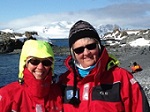 Marisa, we've been back a week and I'm writing to say how wonderful our trip was. Thanks you for all your guidance and planning. Buenos Aires was so interesting. Our tour guide, Alejandro, was top notch-- and very funny. The hotel was in a good location and the all-day tour in Ushuaia was memorable. The ship was well-run and the food was both interesting and plentiful. The crew was professional. The expedition leaders were kind, enthusiastic and very knowledgeable. I can't give you credit for the fantastic weather and incredible scenery but it was an amazing trip. Thank you. - Susan Ogden/Rose Marie Wilson (Akademik Ioffe)
Marisa, we've been back a week and I'm writing to say how wonderful our trip was. Thanks you for all your guidance and planning. Buenos Aires was so interesting. Our tour guide, Alejandro, was top notch-- and very funny. The hotel was in a good location and the all-day tour in Ushuaia was memorable. The ship was well-run and the food was both interesting and plentiful. The crew was professional. The expedition leaders were kind, enthusiastic and very knowledgeable. I can't give you credit for the fantastic weather and incredible scenery but it was an amazing trip. Thank you. - Susan Ogden/Rose Marie Wilson (Akademik Ioffe) Carrie and Justin, I just wanted to send the two of you a message to thank you for all your help putting together our trip to the Antarctic. The trip was absolutely fantastic – definitely the best trip we have ever taken! I would strongly recommend the Akademik Ioffe team to anyone that asks. The places we visited and the excursions we were able to participate in were definitely first-rate, and I would credit the staff for making this happen. They selected great places to visit, and really made each zodiac or on-shore excursion a special experience. The Antarctic is just mind-blowing. We did get south of the Circle – which sounds like it was a bit of an accomplishment – and had really great weather for the entire trip. So again, thanks for making a totally fabulous trip a reality for us. -Ron & Bonnie Milzer (Antarctic Circle Voyage onboard Akademik Ioffe)
- Antarctica - Frequently Asked Questions
- Q: How do I choose an itinerary?A: Antarctica is the trip of a lifetime, offering abundant wildlife and unique landscapes. Travelling to the end of the world is an unparalleled experience. It’s hard to go wrong with any option but for those with specific interests we recommend reviewing our guide to Antarctica Cruises found here or contacting an Adventure Travel Coordinator.Q: Can I make changes or additions to these tours?A: Antarctica cruise itineraries are set and cannot be changed, but you can certainly add pre/post cruise services (hotels, tours, transfers, flights, etc.) in Argentina and Chile. Southern Explorations is happy to assist with any additional services you require.Q: When is the best time to go to Antarctica?A: Travel to Antarctica occurs during the Austral Summer with cruise expeditions departing from late October through March. You may wish to schedule your trip according to what wildlife activities you’d like to observe, or any specific adventure activities you would like to do, such as snowshoeing, skiing, mountaineering, whale watching, and more, which are only offered on certain departures.Q: When is the most affordable time of year to travel to Antarctica? What’s the best way to get a deal on an Antarctica cruise?A: It is a popular misconception that the best way to obtain a deal on an Antarctica cruise is to wait until the last possible moment to book. While this works out sometimes, this scenario is rarer and rarer as Antarctica’s popularity as a tourist destination increases. A few years ago, operators had trouble filling their boats with paying passengers, so last-minute deals were common. Now, most Antarctica cruise departures sell out far in advance, so there is no reason for operators to offer last-minute deals. Currently the best way to obtain a deal on an Antarctica cruise is to book early, as many operators offer early booking discounts.
Generally, it is a good idea to confirm your cruise at least eight months to one year in advance. The time period around the holidays (Christmas/New Year's) tends to sell out further in advance. Fly cruises, during which you fly over the Drake Passage rather than crossing it onboard the vessel, also tend to sell out early, so it is a good idea to book more than one year in advance if you choose this type of cruise.
Prices are higher for travel in late December, January, and early February, as this is high season. Prices are lower early season (November/early December) and late season (late February/March).Q: What can I expect to see at different points during the season?A:- Late October and November: The early part of the season showcases a number of highlights. Landing sites are at their most pristine. The possibility of seeing sea ice is present early on, before it breaks up later in the season. Late October to early November sees Adélie, Chinstrap and Gentoo adult penguins and Antarctic-breeding seabirds starting to come ashore to their breeding sites where they commence courtship rituals and nest building. Shortly thereafter eggs are laid and incubated. Emperor penguins can be seen on the frozen Weddell Sea (visited via helicopter on special Emperor penguin voyages).
Spring flowers begin blooming in the Falkland Islands (Islas Malvinas) and elephant seals are actively courting in South Georgia. South Georgia's female king penguins lay their eggs in November and the parents can be seen "carrying" eggs on their feet so that the parent can shuffle around the colony while the other adult goes out to sea to feed. "Oakum Boys" — king penguin chicks from the previous season — can also be seen in the rookeries. Fur seals litter the beaches in South Georgia with the males aggressive and ready to mate.
- December and January: The increased number of daylight hours brings exceptional opportunities for photographers and non-photographers alike, and the expeditions make the most of the summer weather and continuous hours of daylight. Research activity in the Peninsula at the scientific bases is at its peak. Penguin chicks begin hatching in the Falklands (Islas Malvinas); followed by hatchings in mid- to late-December at sites in the Antarctic Peninsula. Some 30 days after hatching, penguin chicks can be found in "crèches," resembling a nursery of sorts, which leaves both adults free to replenish their food supply. An exciting time of this part of the season is when the parent returns with food and the hungry chicks are persistent in being fed, running after the parent (or any adult penguin with food) in a "feeding chase." Whale sightings of baleen and toothed whales escalate in the Peninsula area. Seal pups can be seen on the beaches in South Georgia. Sea ice is also beginning to break up, which allows for the possibility to begin to access to rarely visited sites in the Weddell Sea, Ross Sea and within the Antarctic Circle.
- February and March: Sightings of whales are at their peak in the Peninsula and an increasing number of fur seals can be found along the Peninsula and offshore islands. Young fur seals are also quite playful in South Georgia. Penguin colonies are very active with the penguin chicks beginning their molt - losing their fuzzy down and developing their adult plumage. During this timeframe, the parents will abandoned their chicks, and return out to sea to feed and fatten up for their own molting stage. Most colonies (Adélie, Chinstrap and Gentoo) are nearly vacated by the end of February to early March. Blooming snow algae is prevalent and receding pack ice has reached its peak for the season, allowing for easier exploration within the Weddell Sea, Ross Sea and Antarctic Circle.
Q: What is the weather like in Antarctica?A: Antarctica is the highest, driest, windiest, coldest place on earth, but keep in mind that all tourism trips occur during Austral summer. The average summer temperature in the Antarctic Peninsula area is around 25 to 32°F (-4 to 0°C), although sometimes it will feel substantially colder due to the wind chill factor and water splashing up while riding in zodiacs. You can expect to encounter varied conditions including rain, snow, high winds, bright sun, and fog.Q: What is a typical day like in Antarctica?A: All three meals are eaten on board the ship. After breakfast, you will head out for your morning excursion for 2 to 5 hours, then get back on board to eat lunch while the ship navigates to the next landing site. Here you will once again disembark on land for 2 to 5 hours before dinner.Q: How physically fit do I need to be to enjoy a trip to Antarctica?A: You do not need to be extremely physically fit to travel to Antarctica, but should be comfortable walking short distances over uneven terrain, including snow, ice, and rock. Most ships also have a steep metal gangway that you must descend and ascend to embark/disembark the small zodiac boats that ferry passengers to shore. Your guides will always be there to assist you.Q: While in Antarctica, will I get to get off the ship and walk around on land?A: Yes! You will make landings every day you are in Antarctica, and the cruise staff will ensure you spend as much time on land as possible. This is true of every Antarctica cruise we offer. There is no cruise during which you stay onboard the ship the entire time.Q: How much time do I need to visit Antarctica?A: Standard Antarctic Peninsula cruise itineraries are 10 to 12 days long. The shortest Antarctica voyage we offer is 6 days long, with our longest being 32 days. Please inquire for details about specific voyages.Q: What are your booking and cancellation policies?A: All Antarctica cruises have different deposit policies, with the deposit amount typically ranging from $1500 per person to 25% of the total trip costs. Final payment is usually due between 100 days and 120 days prior to travel.
Antarctica cruise cancelation policies vary widely from ship to ship. The cancelation penalty from the time of booking up until 90 or 120 days prior to departure can be as little as $500 per person or as much as $5000+ per person. Generally, all cruises will have a 100% cancelation penalty within 90 days of departure. Please inquire for details about cancelation penalties for specific ships.Q: What kind of accommodations can I expect?A: Accommodations and amenities on board Antarctica cruises vary from simple 3-star to luxury 5-star. Please inquire for details.Q: Do tours include airfare?A: Most Antarctica cruises do not include any airfare, though some include roundtrip flights from Buenos Aires to Ushuaia, and “fly cruises” include flights from Punta Arenas, Chile to Antarctica or to the Falkland Islands. Southern Explorations is happy to arrange any flights you require within Argentina or Chile. Please inquire about airfare inclusions for specific cruises.Q: How many people are on your tours?A: The Antarctica cruise ships we offer range in size from a capacity of 54 to 200 passengers. “Mega ships” with thousands of passengers on board are not allowed to make landings in Antarctica, so all vessels are relatively small.Q: Do I need travel insurance, what all do I need, and how much does it cost?A: All Antarctica cruises require that passengers purchase travel insurance covering emergency medical evacuation and repatriation. The cost of medical evacuation transport from Antarctica is high, and as it is the responsibility of the traveler, this coverage is imperative. Though trip cancellation insurance is not required, it is highly recommended. The cost of travel insurance varies from individual to individual and depends on many factors, such as cost of trip covered, age of traveler, where you live, etc. We recommend contacting Berkshire Hathaway or Travel Guard, or click here to compare other trip insurance companies.Q: Where do Antarctica cruises begin and end?A: Most Antarctica cruises begin/end in either Ushuaia, Argentina or Punta Arenas, Chile. Occasionally cruises depart directly from Buenos Aires, Montevideo, or other port cities, but this is rare. When departing from Ushuaia, you board the cruise at the pier in town and cross the Drake Passage onboard the vessel. Trips departing from Punta Arenas are "fly/cruise" programs that fly you (one-way or both-ways) by small aircraft to the South Shetland Islands, just off the Antarctic Peninsula to embark your expedition ship there. There are also some cruises that start with a flight from Punta Arenas to Stanley in the Falkland Islands. Please check your itinerary for any inclusions, or needed additions, such as pre- or post-trip hotel nights and domestic flights to your embarkation cities. Southern Explorations can book any needed pre- or post-trip hotels, domestic flights, tours and transfers, and include them within your trip costs.Q: What can I expect while crossing the Drake Passage? Will I get seasick?A: The Drake Passage is the body of water between Cape Horn (the southernmost tip of South America) and the Antarctic Peninsula. On most Antarctica cruise ships it will take a full two days to cross the Drake Passage. This passage has some of the roughest recorded sea conditions in the world (the “Drake Shake”), but it can also be pristinely calm (the “Drake Lake”). Conditions in this waterway can vary at any time of year depending on weather, and it is impossible to predict how rough it will be in advance. Some passengers experience seasickness, and others do not. It is advisable to come prepared by packing motion sickness remedies. All ships also have doctors onboard, and these medical professionals are extremely adept at assisting passengers with any seasickness concerns. Once in Antarctica, sheltered waters are normally encountered with little problem for rough seas. NOTE: There are also options to do what is called a "fly/cruise" program where you fly by small aircraft to the South Shetland Islands, just off the Antarctic Peninsula and then join up with your expedition cruise ship there, thus avoiding crossing the Drake Passage onboard the vessel.Q: Can I bring my photographic drone to Antarctica?A: The governing body of Antarctic tourism is called the International Association of Antarctica Tour Operators (IAATO) and Southern Explorations is a member of this organization. IAATO members have agreed that they will not allow the recreational use of UAVs (drones) in the unique, and often wildlife rich, coastal areas of Antarctica. Through the unique global partnership that is the Antarctic Treaty system, the entire continent is formally designated as a 'natural reserve, devoted to peace and science'. Antarctica is regarded as the last great wilderness on our planet, still pristine with wildlife and landscapes that show little evidence of direct human activity. Visiting and operating in an environment like this comes with a responsibility to do so carefully and with minimal impact. UAVs are a relatively new phenomenon and IAATO Is therefore taking a cautionary approach, as it is possible they could have a negative impact on the environment. Also, as you can imagine, many drones flying over a penguin colony would not only be potentially detrimental to the birds (adult penguins are distracted by drones, which allows a Skua to swoop in and eat their eggs or swipe one of their chicks), but will also greatly diminish the experience of other passengers seeking to enjoy the beauty and solitude of the Seventh Continent. So, please, leave the drones at home!Q: Will I get more information on packing, vaccines, currency, electricity, etc.?A: After booking, you will receive a link to our online trip portal which includes all of the need-to-know information that is specific to your itinerary. This includes packing lists, restaurant recommendations, tipping guides, FAQs, vaccine recommendations and currency information. Your Adventure Travel Coordinator will also be a great resource for any other information you may need. - Late October and November: The early part of the season showcases a number of highlights. Landing sites are at their most pristine. The possibility of seeing sea ice is present early on, before it breaks up later in the season. Late October to early November sees Adélie, Chinstrap and Gentoo adult penguins and Antarctic-breeding seabirds starting to come ashore to their breeding sites where they commence courtship rituals and nest building. Shortly thereafter eggs are laid and incubated. Emperor penguins can be seen on the frozen Weddell Sea (visited via helicopter on special Emperor penguin voyages).


 The 367-ft M/V National Geographic Explorer is a state-of-the-art, fully stabilized Antarctic expedition ship that debuted in August of 2008, equipped with unmatched tools for exploration.
The 367-ft M/V National Geographic Explorer is a state-of-the-art, fully stabilized Antarctic expedition ship that debuted in August of 2008, equipped with unmatched tools for exploration.